

Report: Innovation in watchmaking
The best of current and future horological innovation.

Innovation: the lifeblood of watchmaking
he reason that watchmaking has continued to flourish over the centuries is that it has continually innovated. Innovation – in its original sense of “renewal” – is a continual process. Think of a plant that grows back each spring: they’re the same, and yet always different. Innovation doesn’t start with a blank page. It’s a historical accumulation – each successive stage building on the ones that came before.
There are countless examples: the new geometry of the tourbillon relies on an ancient principle discovered by Archimedes; watch display cases that use the principle of suspension are inspired by the magician Houdin; monocrystalline silicon was identified back in 1854... the list goes on.
But innovation is essentially about strategically leapfrogging the competition – as illustrated by the way silicon has gradually made its way into watch movements. In other words, innovation is the lifeblood of watchmaking. The future belongs to the innovators. And that’s a universal truth.
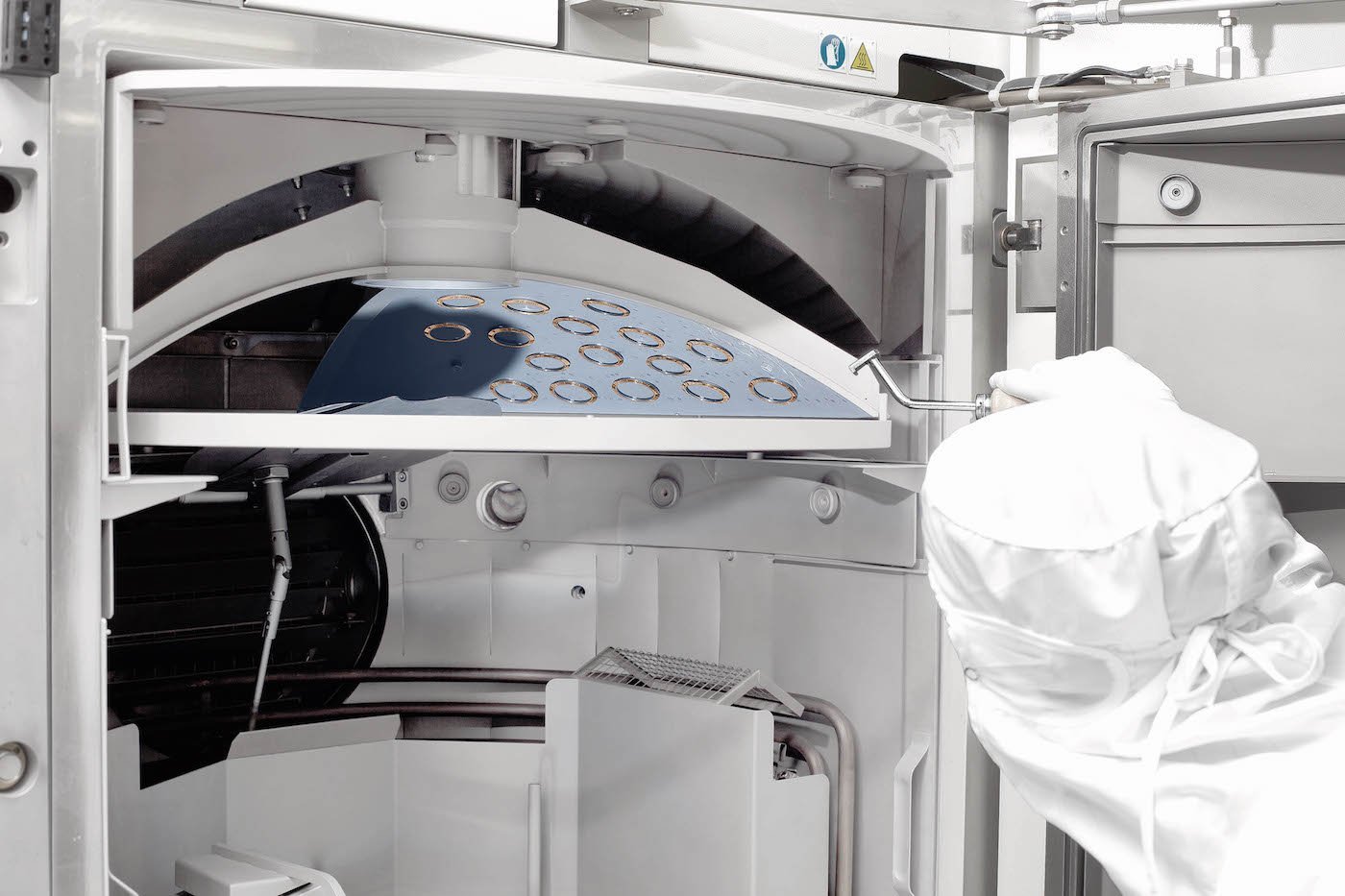

The CSEM brings life to the dial
t’s difficult to avoid being transported back to childhood when presented with the “living dials” developed by the CSEM, a major microtechnology research centre based in Neuchâtel (where the silicon escapement was developed). In one instance, stardust gathers with the passage of time, creating landscapes on the dial, in the form of poetic motifs representing the phases of the moon. In another, deconstructed motifs come together to form the indexes of the watch as the hour hand passes by.
Frédéric Loizeau, in charge of technology transfer at CSEM, presents this innovation with enthusiasm: “We have been working on flexible components for several decades now as part of our collaboration with the space industry. By combining our know-how in aerospace, silicon and horology, we have succeeded in designing a mechanical complication that simply ‘sits’ on the dial and allows animations to be triggered thanks to a system of cams, rods and contact points.”
As thin as a sheet of paper, this monolithic silicon module is made up of no fewer than 384 deformable elements – that is, 32 parts per animation, on a dial with 12 indexes. “The value of this innovation lies in the contrast between its apparent simplicity – everything is visible on a single layer – and the striking observation that there are no cogs,” the manager emphasises. “The mechanism itself is magical to the enthusiast: you don’t know how it works.” These new complications are compatible with any mechanical movement, as long as they can connect to the right component.
The concept of a monolithic part with flexible elements has been used for decades in the space industry, as it avoids friction or fatigue.
-

- “Moon Dust”: The dial is composed of hundreds of stars. Some of them come together to form the current moon phase.
Forming and deforming
Without necessarily knowing it, we use a similar, albeit more rudimentary, flexible technique every day when we uncap our shampoo or Tic Tac box: in both cases, a single piece of plastic is opened by deformation. The mechanisms developed by the CSEM work on the basis of forming – and then deforming – the flexible components to create the desired patterns. The use of silicon is essential in order to work with the required precision, in the micron range.
Although it employs an innovative material and principles used in aerospace, this “dial automaton” also has a direct, horological connection with the 18th century, and the automata of Jaquet-Droz, since it is based on a similar system of cams that transmit information about the animation.
Without necessarily knowing it, we use a similar, albeit more rudimentary, flexible technique every day when we uncap our shampoo or Tic Tac box.
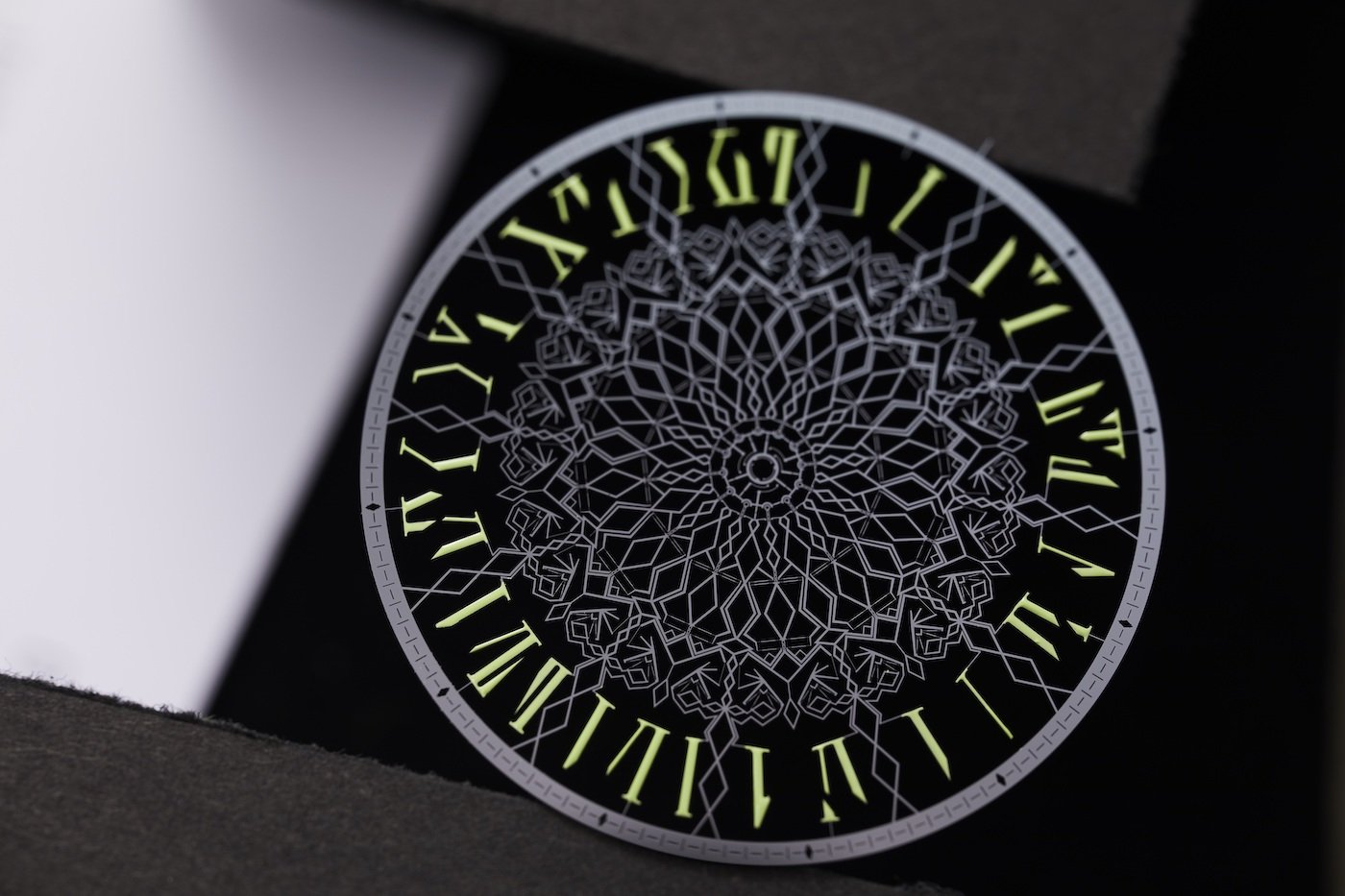
A poetic soul
Francis Cardot, a researcher at the CSEM, imagined and developed this concept from scratch, with the idea of bringing a different, more poetic soul to watch displays. Finishing touches can be applied to the motifs thus created, for example in the form of miniature paintings. “With this new type of complication, the creative possibilities for watchmakers are almost infinite,” states Frédéric Loizeau.
Following initial consultations on this innovation within the watch industry, the CSEM is considering creating a separate entity to pursue its development and bring it to market. Frédéric Loizeau assures us that industrialising this technology will make it possible to boost the creativity of any brand.
“With this new type of complication, the creative possibilities for watchmakers are almost infinite.”

Recycling self-luminous watches
b-microtec, a Swiss microtechnology company, was founded in 1969 in Niederwangen near Bern. One of its branches, trigalight, specialises in the production of a self-powered illumination technology using gaseous tritium light sources, which can deliver luminescence for decades without any external energy source.
Besides watchmaking, this technology, which requires specific know-how in in the fields of microtechnology, chemistry and physics, is also used in the security, automotive and aerospace industries.
The company has just announced that it can now guarantee a “closed product life cycle from production all the way to recycling” for tritium. This development follows the introduction of the world’s first tritium recycling facility in December 2020, a move aligned with a wider trend in the watchmaking industry to work with shorter logistical circuits, recycling and even upcycling.
The remaining tritium is extracted from the glass capillary, released with the help of a filter, and can be fully reused.
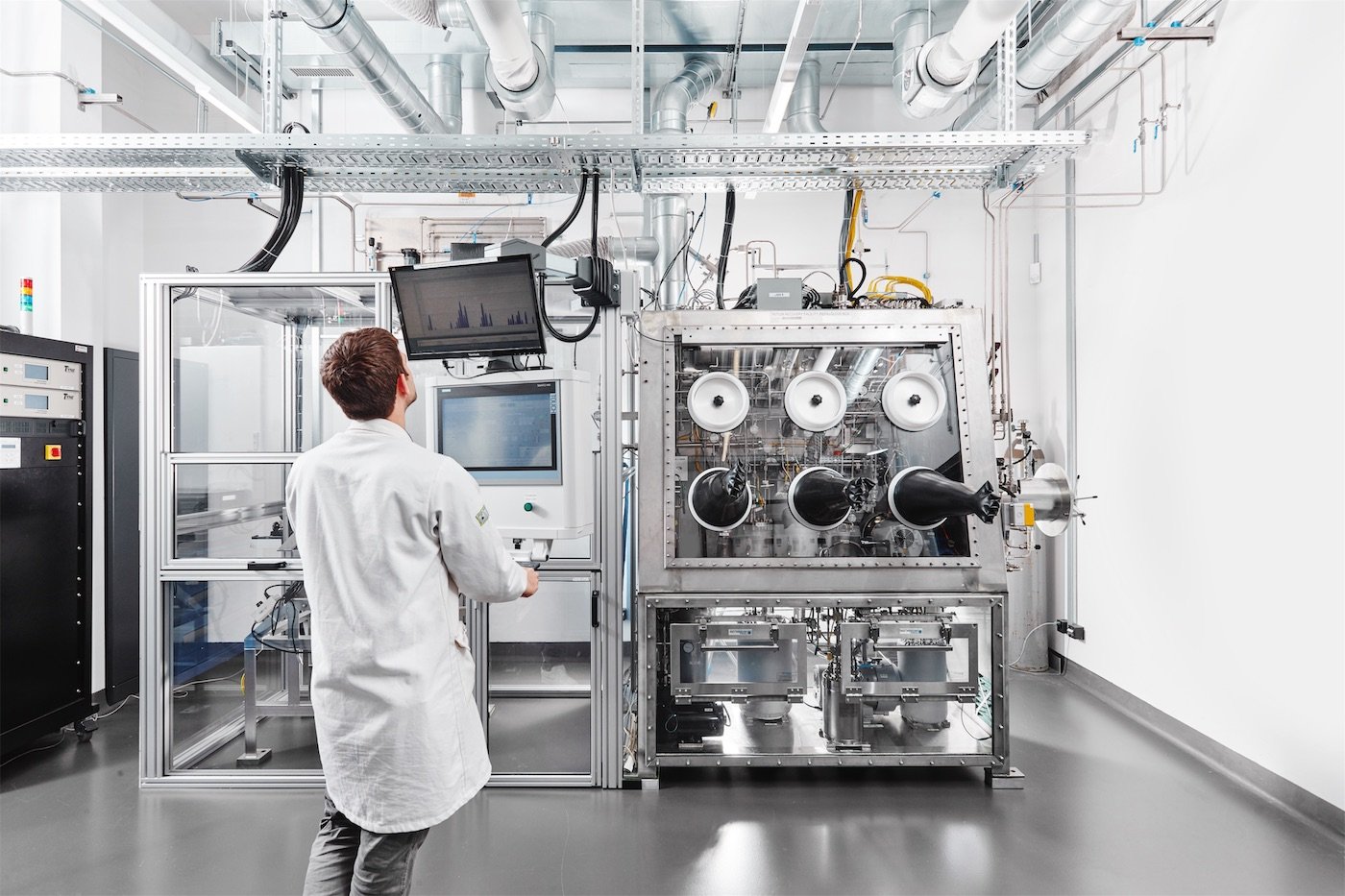
Similar to waste-water treatment
“With the successful development of a recycling facility, we are able to recover over 90 percent of the tritium that is not being utilised in the final product or is left in old products for reuse,” says David Corpataux, executive developer of the facility. “Consequently, we can conserve tritium resources and significantly reduce transportation.”
The operating principle can be compared with waste-water treatment: the remaining tritium is extracted from the glass capillary, released with the help of a filter, and can eventually be fully reused. The purity of the recycled gas is identical to newly purchased tritium.
-

- Beat Scheidegger, Head of trigalight
In addition to recycling of production offcuts, trigalight accepts returns of products sold in the past. The microtechnology company also specialises in the application and exchange of its fine illumination capillaries. “Due to authority restrictions, the recycling of old products is currently limited to Switzerland. However, we are working towards a cross-border solution to offer this service also to our international partners and clients in the near future,” states Beat Scheidegger, Head of trigalight.
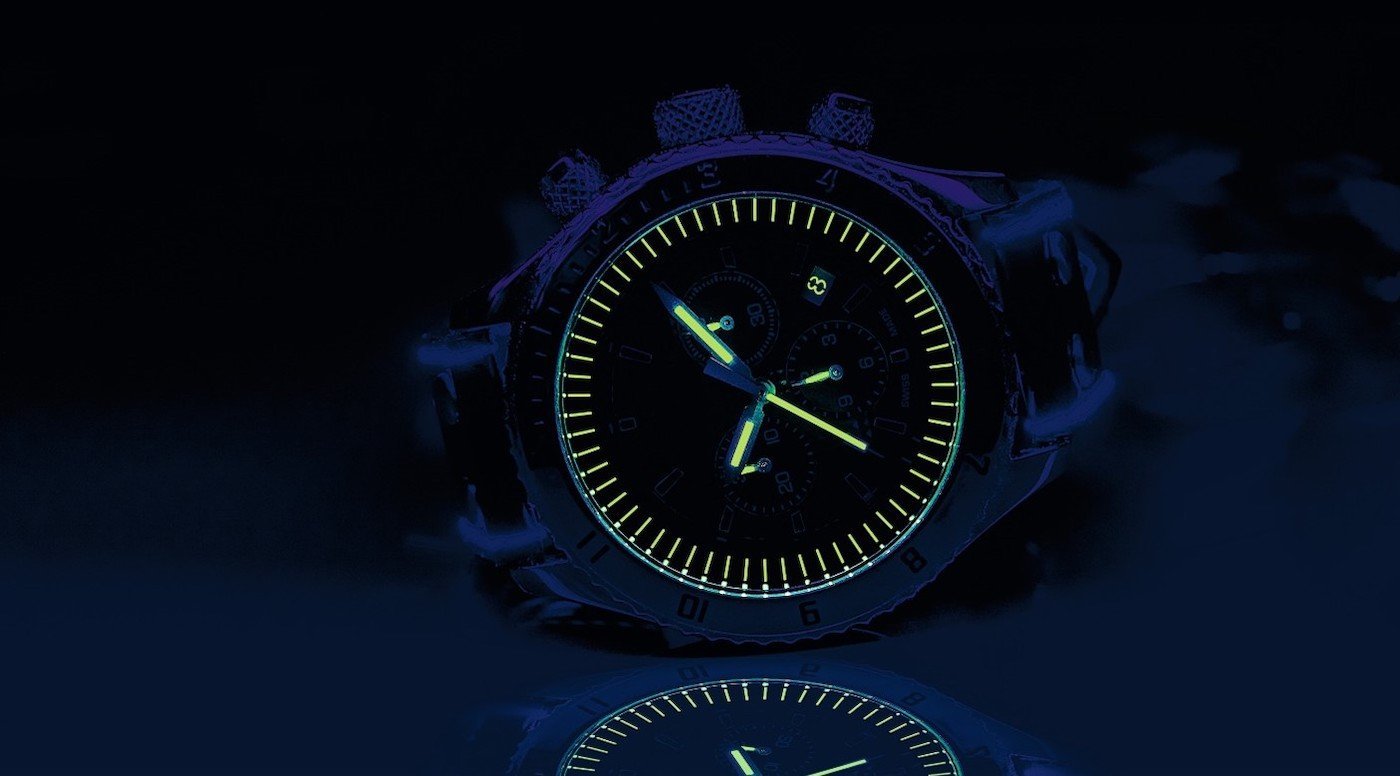

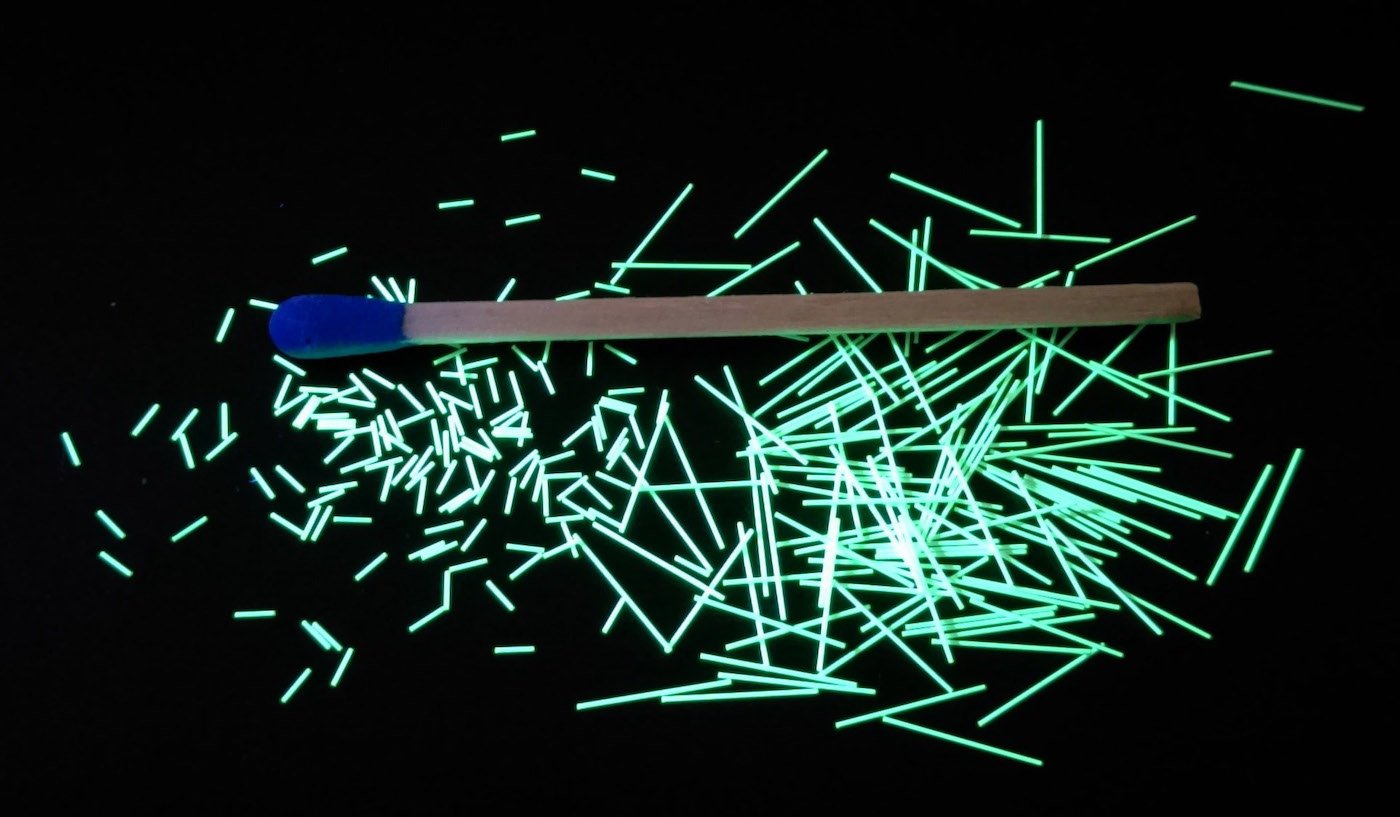
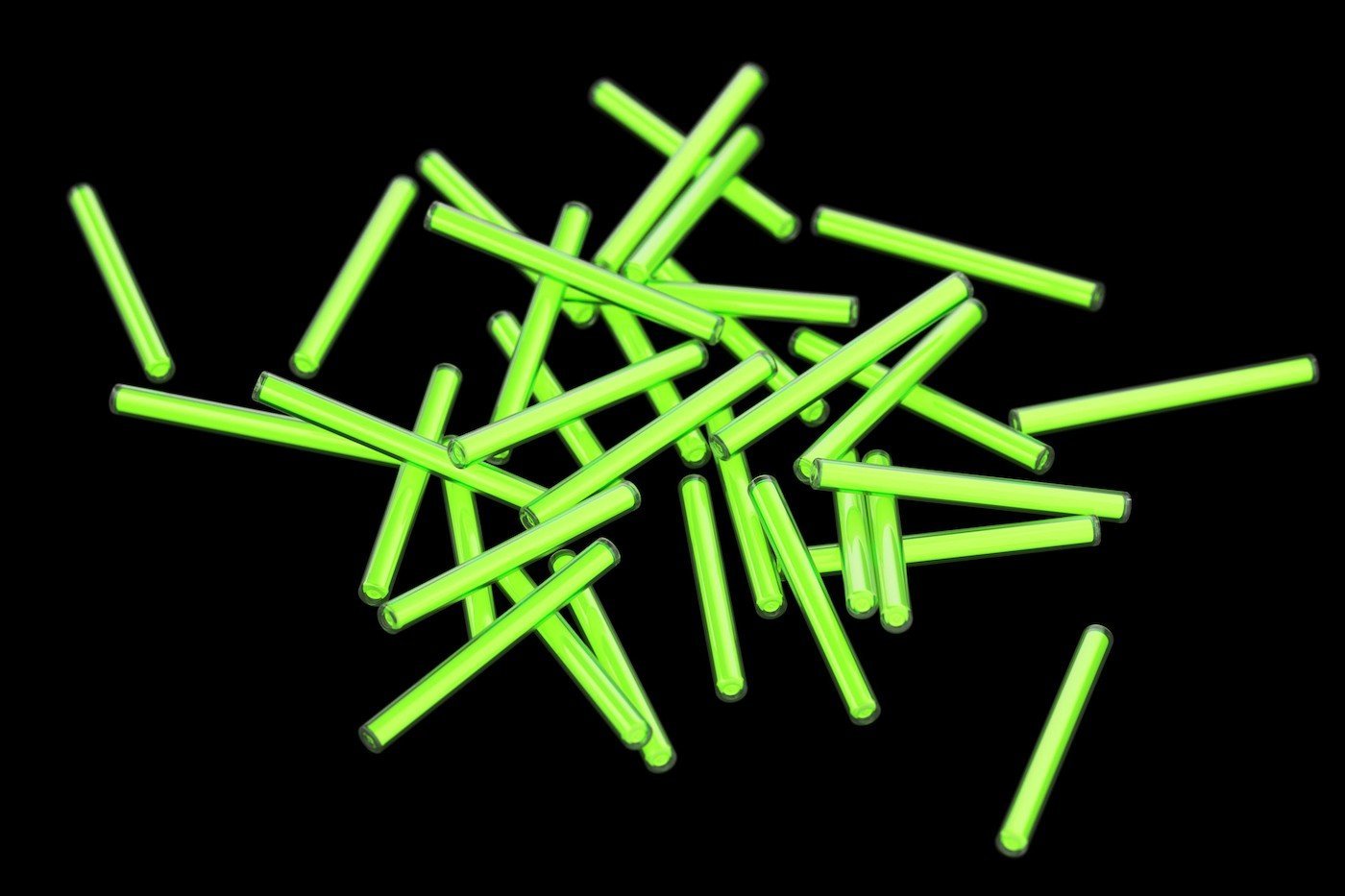

Displays: watches in ethereal suspension
atchmakers are fond of the word “magical” as a metaphor to describe their creations. But magic, or rather magicians – also called illusionists – have on several occasions enriched watchmaking with their ingenious ideas. Starting with the “creator of modern magic,” the famous Robert-Houdin.
It is to this former clockmaker-turned-magician, outstanding mechanical engineer, maker of automatons and inventor that we owe such things as the first Mystery Clock, the hands of which are suspended as if by magic, floating in transparent, empty space. Cartier has made it a speciality of theirs to this day and has produced some masterpieces.
One of the most famous tricks of Jean-Eugène Robert-Houdin (who soon dropped the name of Robert, too frequently found in watchmaking spheres, in favour of his wife’s, Houdin) was “The Floating Boy” or “Ethereal Suspension” in which he levitated his own son in a cloud of ether. Every conjuror in the world has made use of his tricks and techniques.
One of the most famous tricks of Jean-Eugène Robert-Houdin, the creator of modern magic, was “The Floating Boy” or “Ethereal Suspension” in which he levitated his own son in a cloud of ether.
Promotional magic
Levita is a young Belgian company founded in 2018 by two magicians, Clément Kerstenne and Philippe Bougard, well-known for their shows and internationally famous in the professional conjuring milieu for their innovative concepts. After setting up the magic company In The Air back in 2012, they grew and put their talent, ingenuity and humour at the service of a kind of magic they call “promotional”.
-

- The Levita team
Their performances at corporate events range from close-up conjuring tricks to shows on a grand scale where they turn cars into pumpkins. With Levita, they set about developing a unique technology. This enables small objects to be levitated and then float and rotate inside an otherwise empty showcase, 24 hours a day, seven days a week.
With Levita, the two magicians set about developing a unique technology. This enables small objects to be levitated and then float and rotate inside an otherwise empty showcase, 24 hours a day, seven days a week.

“A mixture of electromechanics and the magician’s secret!”
The watch, since this is the object in question here, levitates and floats thanks to “a mixture of electromechanics and the magician’s secret!” Officially, that is all we know.
The “magic” system is fluid; the watch moves and turns, allowing itself to be viewed from all angles, describing arabesques in the air. It will work perfectly well without a glass pane; you can grab the watch and hold it in your hands.
This possibility is used to fine advantage, for instance, by the Roger Dubuis boutique in Geneva: when a customer comes to collect a watch, they find it levitating in the foyer and can take possession of it themselves.
A software programme lets you define the movements, route and speed of the levitated item or items. “We can well imagine a swarm of bee-shaped jewels, swirling and crossing over in mid-air,” says Nicolas Dembour, operations manager at Levita.
The electromagnetic part of the system has a motherboard that can be connected to numerous additional devices. One example: it could be connected to a camera or presence detector to make the moving object interact directly with the spectator, approaching or moving away depending on the latter’s movements. The creative possibilities of this “automation of magic” seem endless and the opportunities for innovative scenography are numerous.
For the moment, the weight and volume of the objects that can be levitated are limited. But Levita will very soon be capable of making objects weighing two or three kilos float. Moreover, a prototype already works today with a bottle of champagne weighing nearly a kilo.
At the Roger Dubuis boutique in Geneva, when a customer comes to collect a watch, they find it levitating in the foyer and can take possession of it themselves.

Invisible technology
One important point is to ensure that the technology – totally invisible – does not take precedence over the object but is simply there to magnify its presence, to serve the object, whether watch, jewellery, accessory, garment or work of art. The big luxury groups from Richemont to LVMH are already keenly interested in what Levita has to offer. Some recently took the plunge, such as Roger Dubuis, or Audemars Piguet who installed around ten Levita showcases, mainly in Asia.
But the objective of this young promotional magic company is to retain a certain exclusivity and build close relationships to allow its customers to gradually appropriate the technology and creatively enrich it. In a way, the price alone guarantees exclusivity, starting at €18,000 for one showcase, reduced to €13,500 each for an order of ten.
They already offer several models in different sizes, in particular small, portable showcases for one-off presentations or exhibitions.
Levita will soon be capable of making objects weighing two or three kilos float. A prototype already works today with a bottle of champagne weighing nearly a kilo.
But as everyone knows, magicians have more than one trick up their sleeve.
“At the moment we’re working on automating other classic conjuring tricks,” Nicolas Dembour explains. “For example, we’re working on teleportation and automation. Imagine a showcase with four bags side by side. Each bag has a different object in it. An object is teleported from one bag to another. It’s here, then it vanishes and reappears by magic in another bag...”.
A spectacular way of breathing new life into the art of window displays.
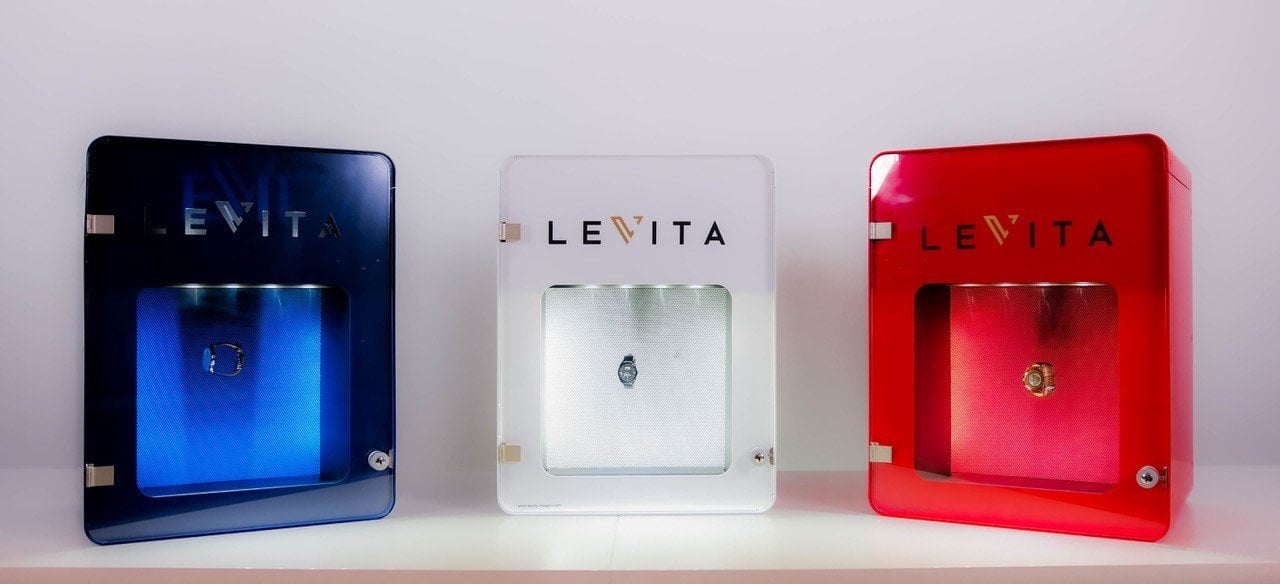

Swatch’s new plastic
watch is never really where you expect it to be. In 2013, the brand launched the Sistem51, a watch equipped with a mechanical movement, produced using a fully automated assembly process, at a time when the watchmaking trend was all about “manufacture” and a handmade aesthetic.
Seven years later, when the world was expecting a strong move towards the smartwatch segment, Swatch launched itself headlong into materials research. The brand is now taking the opportunity to return to the designs of its very first models, as it prepares to celebrate its 40th anniversary in 2023.
“We are working to create surprises,” says Carlo Giordanetti, member of Swatch’s Product and Design Committee. “The brand’s adventure actually began with a big surprise: at that time, quartz movements were associated with a digital time-reading system.”
-

- Swatch’s headquarters in Biel, Switzerland
Swatch’s recent detour into bio-sourced plastic was not primarily about ecology: it was prompted by pure industrial research. In fact, as early as the 1990s, the brand was experimenting with prototypes made from plastic based on corn, for example, but the technology was not mature.
-

- Carlo Giordanetti, member of Swatch’s Product and Design Committee
“We’re not betraying our industrial roots”
“In the 1980s, plastic was perfectly in tune with the times, with its strength and water resistance,” says Carlo Giordanetti. “In recent years, we have been looking for a new plastic, without betraying the values of the industrial project that is Swatch. Indeed, we didn’t want to abandon injection moulding or the basic shape of the original watch.”
-

- With its 1984 Reloaded collection, Swatch combines original models from 1984 with bioceramic.
The brand had to find the right material: if it was too soft, the plastic would not hold; if it was too hard, its properties would change when it cooled, causing it to break. After several years of research, the Swatch Group’s R&D teams and laboratories settled on a very special biomaterial: castor oil. This has the properties required to produce an alternative plastic material and, above all, the ability to be produced in a range of colours.
-

- The famous automatically assembled Sistem51 mechanical watch is now also available in bio-sourced materials.
“We tested several other materials, but there was always a problem with the injection point in the mould,” says Carlo Giordanetti. “If the material is not homogeneous, you will see the injection points in the finished product. This is a characteristic of cheap products. You will never see them on a Swatch!”
When the world was expecting a strong move towards the smartwatch segment, Swatch launched itself headlong into materials research. The brand is now returning to the designs of its very first models, as it prepares to celebrate its 40th anniversary in 2023.
Rapid transition to bioceramics
This bio-based plastic is the starting point for a new generation of Swatch watches. It will gradually be introduced throughout the collections. “Today, the expression of the brand is as much about a diversity of colours as it is about a diversity of materials,” Giordanetti continues. The packaging of this new generation of models is made from an innovative mixture of... potato starch and tapioca.
-

- The 47mm Big Bold Bioceramic models are made from a compound of two-thirds ceramic and one-third bio-sourced plastic derived from castor oil.
Within six months, this development led to another innovation: bioceramic, which combines two-thirds ceramic with one-third bio-sourced plastic. “It’s the best of both worlds: the material is injectable, so it doesn’t need to be treated like the materials used in luxury goods, and the plastic provides additional strength,” Carlo Giordanetti points out.
-

- The new material gives the Big Bold Bioceramic models a silky touch.
After plastic, a new steel?
Since April 2021, almost half of the new references Swatch has launched have been equipped with a bioceramic case. Some models incorporate both bioceramic and bio-sourced plastic. The former is used to make the case and the buckle; the latter is for the strap, the strap loop and also the crystal.
-

- The Gent and New Gent models in bioceramic are available in a variety of colours.
“Without a doubt, we are only at the beginning of this research. Our teams are continuing to work on integrating other bio-sourced or associated materials in the long term,” explains Carlo Giordanetti. One new area of R&D is the production of Swatch’s famous printed designs in bio-sourced plastic. Metal, which accounts for a significant proportion of the brand’s output, and is currently produced in the form of injected steel, is also part of the research.
Since April 2021, almost half of the new references Swatch has launched have been equipped with a bioceramic case.

Sapphire: the quest for transparency
ehind the expansion of the use of sapphire in watchmaking, for the watch glass and beyond (case, bracelet), we can find several companies that specialise in sapphire manufacture and treatment. Econorm, Sébal, Erma, Stettler and Comadur (Swatch Group) are just a few of the players in the sector.
Sapphire’s arrival on the watchmaking scene dates back almost a century; Jaeger-LeCoultre used a sapphire crystal to protect the dial of the Duoplan as early as 1929. Since 1966, Swiss brand Century has made sapphire watches its core competitive advantage, through its ingenious and distinctive Megalith technique used to fuse two discs of sapphire into one inseparable piece. In 1980, master watchmaker Vincent Calabrese designed a watch made entirely from sapphire for Corum. Its transparency allowed the ingenuity of the Golden Bridge’s baguette movement to be admired.
-

- “Century sapphire” has been the hallmark of the Swiss brand’s timepieces since 1966.
Since then, the quest for transparency in watchmaking has led to the increasing use of sapphire in the industry. In 2020, for instance, Chanel went so far as to offer an all-sapphire bracelet on its J12, a world first. In 2021, Hublot unveiled its spectacular Big Bang Integral Tourbillon Full Sapphire model.
The quest for transparency in watchmaking has led to the increasing use of sapphire in the industry. In 2020, for instance, Chanel went so far as to offer an all-sapphire bracelet on its J12, a world first.
-

- Inspired by the energy of electronic music, Chanel’s J12 X-Ray Calibre 3.1 is made entirely of sapphire crystal and set with baguette-cut diamonds. In 2020, the brand introduced a full sapphire bracelet for the first time.
Sapphire and ruby: cousins
“To innovate and refine the treatment of sapphire, you have to start by knowing the raw material perfectly,” stresses Anthony Schwab, the head of Econorm, which has workshops in Gams and Saint-Imier in Switzerland. Sapphire is in fact a type of corundum, the red variant of which is known as ruby. Sapphire and ruby are therefore “cousins”, and both are very common in watchmaking. They are known for their hardness (the second-hardest natural material after diamond), which makes them difficult to machine.
-

- Diamonds through coloured sapphire? That is what Richard Mille achieved with the Gemset Sapphire RM 07-02. Setting elements on sapphire is a real engineering feat requiring a laser operating to the nearest micrometre. This takes twice the time of ceramics or carbon.
Corundum is naturally colourless, but it acquires different hues through the presence of impurities. Traces of iron and titanium, for example, provide the blue colour, which is the most common tint in its natural state. Major sapphire deposits are found in southern Asia and eastern Africa.
-

- Zenith has recently reinterpreted two of its most cutting-edge calibres for display through the transparency of a sapphire case. One is the Defy Zero-G Sapphire whose off-centred dial is handcrafted in a mosaic of meteorite, aventurine glass and grand feu enamel on a gold base. The astronomically inspired finish extends to the movement’s cylindrical container, which can also be viewed through the sides of the case. The other is the Defy 21 Double Tourbillon Sapphire, equipped with two independent tourbillons that complete their rotations in 60 seconds for the time-keeping tourbillon, and 5 seconds for the chronograph tourbillon.
But make no mistake: watchmaking uses mainly synthetic sapphire, produced in most cases by a method developed in 1902 by Auguste Verneuil. The industrial “Verneuil process” creates sapphire drop by drop from alumina powder, which is melted over a hydrogen flame at a temperature of over 2,000°C.
Watchmaking uses mainly synthetic sapphire, produced in most cases by a method developed in 1902 by Auguste Verneuil.
-

- In 2021, Jacob & Co. has released new timepieces from its Twin Turbo Furious collection that feature both a fully transparent sapphire crystal case and a decimal minute repeater, a first in the world of haute horlogerie. This includes the “Bugatti Blue” timepiece, which celebrates the manufacturer of high-performance sports cars.
Advanced treatments
“Faced with competition from Asia, our partners Timsaph and Sébal, both located in the Jura region, have launched a 100% Swiss sapphire production, which allows us to rely on a local resource to refine our technologies,” notes Anthony Schwab. On the basis of this raw material, Econorm has been producing “functional sapphires” for the watchmaking industry since 2018. They benefit from cutting-edge treatments: antireflective on both sides, UV filters, achromatic, anti-static and hydrophobic. Indeed, untreated sapphire would reflect too much light and the dial would not be clearly visible.
-

- The case of Hublot’s Big Bang Integral Tourbillon Full Sapphire has been reconstructed in its entirety to house the automatic tourbillon movement. The goal: to remove almost all of the visible screws, overhaul the general geometry of the case to integrate it with the sapphire bracelet, and rework the bridges and main plates to give them the illusion of being suspended in space. The bracelet was also a complex challenge: it alone comprises 165 components, 22 of which are made from sapphire.
As the manager explains: “Functional sapphires are designed to help both the wearer and the watch manufacturer. For example, the addition of an antistatic function will prevent the accumulation of dust during assembly, and protect the watch’s chronometry from the effects of static electricity. The UV filter function preserves the colours of the dial and thus guarantees that customers receive a product that is true to their choice. In a skeleton watch it also avoids premature ageing of the oils, and thus the need for additional servicing.”
-

- A 2-sided anti-reflective treatment of sapphire crystals is a key step to ensure visual performance and high scratch-resistance.
In addition to watch crystals, the company also supplies dials, cases and even movement components such as sapphire cogwheels.
“Functional sapphires” benefit from cutting-edge treatments: antireflective on both sides, UV filters, achromatic, anti-static and hydrophobic. Indeed, untreated sapphire would reflect too much light and the dial would not be clearly visible.
-

- As early as 2008, De Bethune produced the first sapphire crystal hands, encircled by blued titanium, to be fitted on the DB26QP. On the new Dream Watch 5, far from simply carving the case from a single block of sapphire using the traditional methods, master watchmaker Denis Flageollet endeavoured to adapt the sapphire to the watch’s titanium case. The team had to insert no wer than seven different sapphire parts – each crafted with unique curves and proportions – which would then be embedded into the blued polished titanium exoskeleton.
A matter of price
For its R&D, Econorm collaborates with the Swiss Federal Laboratories for Materials Science and Technology (Empa). More than one and a half million sapphire glasses leave the company’s workshops each year, at a unit price ranging from under ten francs to several thousand francs, depending on the complexity of the work (for example, Econorm worked on the dome glass of the Flying T, MB&F’s first ladies’ watch).
-

- Sapphire is increasingly used to reveal the intricacies of complex mechanical movements in “superwatches”. The technical construction of the Louis Moinet Astronef’s case is unusual: a sapphire container mounted on an 18K gold frame, openworked lugs and case middle, and a sapphire dome with applied inner bezel ring. Its transparency enables observers to admire a mechanism that required more than three years of research. In all, six distinct elements are in motion: two satellite tourbillons rotating around the dial, as well as their two cages and their two counterweights.
-

- The Purnell Escape II Absolute Sapphire is the first double triple axis tourbillon in a full sapphire case with movement bridges and dial in sapphire.
Its functional sapphire is not just for watches: like many Swiss subcontractors, the company, which has 60 employees, also works for the medical and automotive sectors, and even for the aerospace industry.
-

- Independent watch brand Artya recently introduced a concept of nano-sapphire allowing for the colour of the sapphire crystal case to change. On the Purity Tourbillon Chameleon, the case turns from a deep blue to a translucent green when exposed to artificial light (6500K or above).
-

- Building on the previous Quasar Light and Quasar Azure models, Girard- Perregaux released a new timepiece housed in a clear sapphire crystal case paired with red accents, the Quasar Infrared. The sapphire case is fashioned from a single sapphire disc. Thereafter, the disc is formed, milled and polished to create a smooth, homogeneous surface, free of inclusions. This latter phase alone takes over 200 hours of work and hundreds of operations.
“Today, the majority of sapphire crystal supplies for the Swiss watch industry come from Asia,” says Anthony Schwab. “We are hopeful that this will change, perhaps as Swiss watchmaking moves upmarket and average prices increase. Demand for our high-tech sapphire crystal should grow. But it’s a shame we have to go through this, because sometimes it comes down to a difference of a couple of francs per unit...”
“Today, the majority of sapphire crystal supplies for the Swiss watch industry come from Asia. We are hopeful that this will change, as Swiss watchmaking moves upmarket and average prices increase.”

Decoration: a new rainbow PVD
or two decades, a wave of colour has swept through contemporary watchmaking. Innovation is no longer limited to the introduction of new materials – it also includes new colours, which can sometimes prove extremely challenging to apply durably.
The Physical Vapor Deposition (PVD) finishing process has also experienced explosive growth. This low-temperature surface treatment process enables thin films of material (chrome, titanium, aluminium, copper, gold or even silver) to be deposited under vacuum, using steam.
More precisely, a PVD treatment is created by coating items inside a pre-evacuated sealed chamber. A target is bombarded with plasma; atoms emitted from the target are projected onto the components, and a coating is created by stacking the layers produced. The chemically neutral environment of the chamber means that very pure, regular coatings can be obtained.
Another more recent surface coating technology is called Atomic Layer Deposition (ALD). This gaseous phase chemical deposition process is used to obtain low-stress layers. Initially used in the semiconductor industry, in 2014 it was adopted by Positive Coating for use in watchmaking, because of its decorative and anticorrosive properties. Compared to a traditional PVD coating, the advantage of this technology lies in the fact that the coating is perfectly compliant and uniform, with a precision of around one nanometre.
It is now possible to apply different shades of the same colour, or a rainbow gradient of several colours, to the components of a watch.
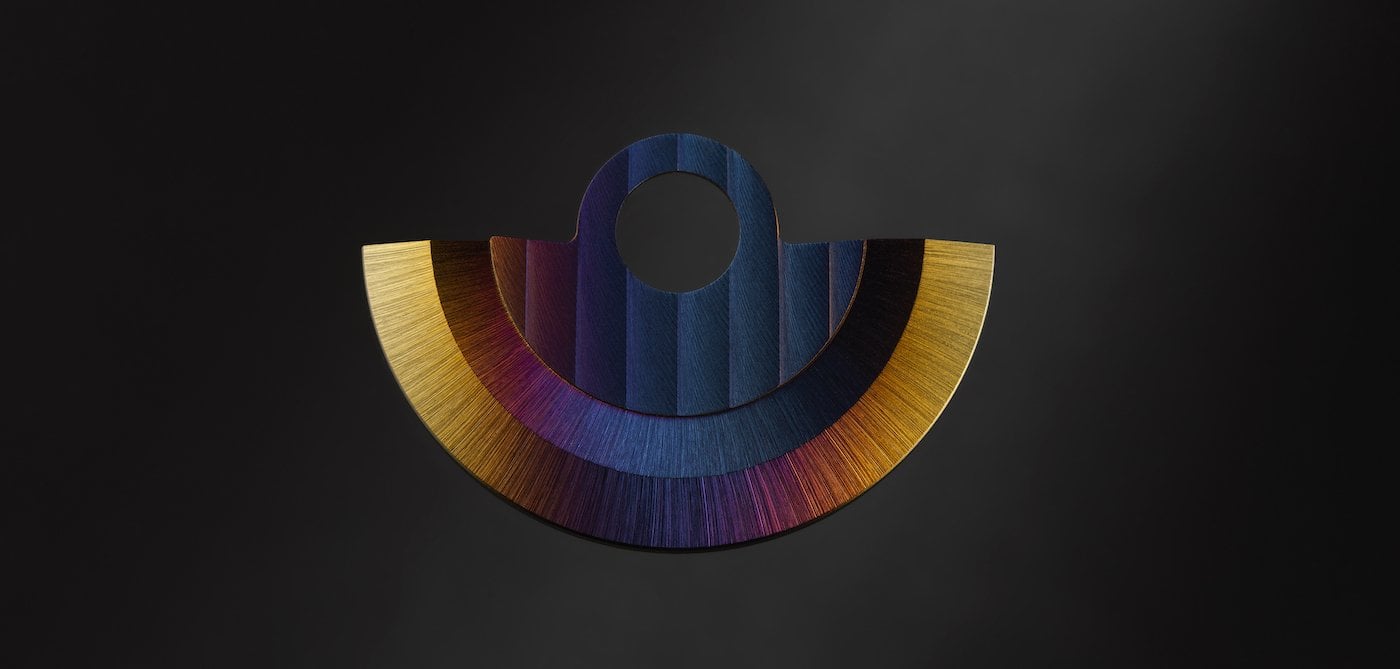
From industry to art
In 2021, Positive Coating introduced an innovation that enables rainbow shades to be created on watch components. It is now possible to apply different shades of the same colour, or a rainbow gradient of several colours, to the components of a watch. It is this second option that the first customer of this technology, Zenith, has chosen for its Defy 21 Felipe Pantone model presented in March 2021, with its three-dimensional PVD producing a spectrum of colours with perfectly smooth transitions.
-

- The Defy 21 Felipe Pantone is the result of a collaboration between Zenith and the Argentinian-Spanish artist Felipe Pantone. This strikingly colourful creation plays with frequencies – both visually and mechanically – with its 1/100th of a second El Primero 21 chronograph movement beating at an extremely high frequency of 360,000 vibrations per hour, as well as with its rainbow-coloured coating on the bridges, central hands and parts of the dial. The limited edition of 100 is the first model to use this innovative three- dimensional PVD coating. Although the process has been standardised, each piece will take on slightly different colours, becoming a unique work of art.
With its hands graduating from blue to yellow and its bridges rom purple to red, this model opens up a new field of exploration for watch decoration, in an industry that is increasingly becoming an art. Felipe Pantone is an up-and-coming contemporary artist with Argentine and Spanish roots. Like many of his other creations, this timepiece, produced in a limited run of 100, plays with the notion of multicoloured frequencies, thanks to the technology developed by Positive Coating.
Although the process has been standardised, the colours of each piece will be subtly different. This technology will certainly be adopted by other brands that are keen on this new “horological rainbow art”.
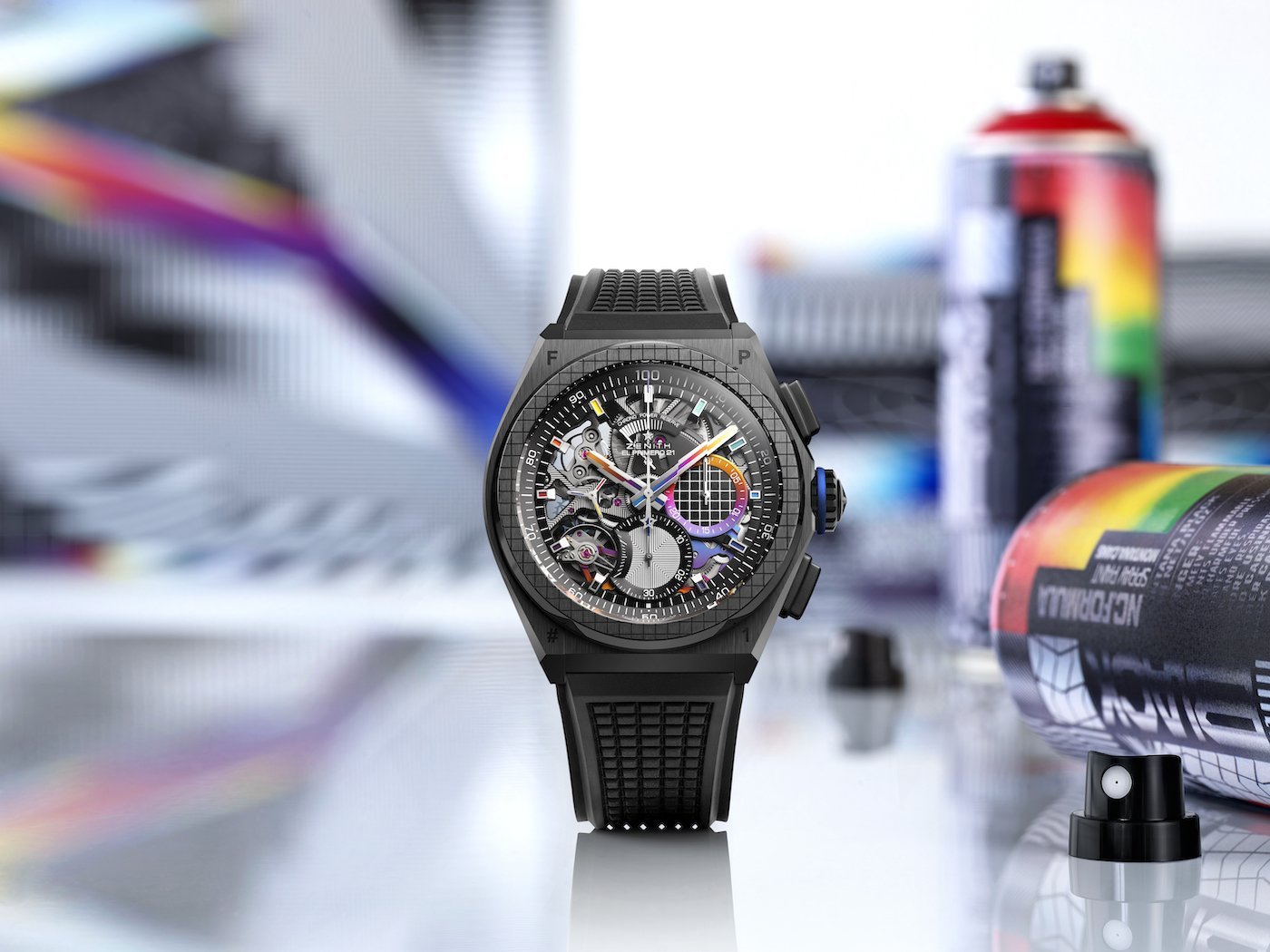

Breguet’s flexible hands: when innovation becomes poetry
echnological innovation is not always visible to the person wearing the watch. It is often concealed inside complex mechanisms, set in alloys, or transforming production methods. But in the case of the variable-length hand of the Breguet Reine de Naples Coeur 9825, it is there before our very eyes, graceful and astonishing.
The oval shape has undoubtedly always been a minority choice because of the geometrical impossibility of getting the minute hand to espouse the contours of the case. To achieve this, the key obviously lies in extensible hands capable of varying their length to adapt their course to the watch’s ovoid shape.
Solutions do exist. We know of a few, rare examples, such as the Ovale Pantographe by Parmigiani Fleurier, a solution inspired by an oval pocket watch by Vardon and Stedmann that was restored at the brand. Its extensible hands are based on the principle of the pantograph: two telescopic structures in the form of a parallelogram which, as they move, follow the elliptical shape of the dial. The architecture is a delicate display of mechanics inspired by the work of a certain Mr. Eiffel.
The solution developed by Breguet for its beautiful oval-shaped Reine de Naples is totally different. Its extensibility is a matter of suppleness and elasticity, rather than the articulation of rigid parts.
The oval shape has undoubtedly always been a minority choice because of the geometrical impossibility of getting the minute hand to espouse the contours of the case. But solutions do exist.
The Queen’s heart
Beyond the scientific and technical aspects of the minute hand of the Reine de Naples, you cannot help admiring the beauty and finesse this flexible appendage lends to the ovoid timepiece, which is inspired by what is believed to be the first watch ever designed to be worn on the wrist: that of the queen of Naples. Showing the passing minutes by means of a tiny heart that swells and contracts is a beautiful, poetic achievement, as well as a horological feat.
But behind the heart is a whole team of “surgeons” who combined concepts, calculations, materials research, tests and prototypes to allow the minute hand to breathe while exactly tracing the watch’s oval shape.
Flexure bearings
Behind the theory we find the famous flexure bearings (theorised back in 2001 by Simon Henein, among others, who today heads up Instant-Lab at EPFL), development of which has spawned numerous recent innovations, notably in watch regulation. These flexure bearings have added a whole new field to watchmaking mechanics.
Applied here to a hand of variable length, they supply an aesthetic, visible solution to a technical problem.
The hand is made using the LIGA process from an alloy of nickel and phosphorous, a stable and hard-wearing material chosen for its suppleness and high yield strength. It is made up of a heart-shaped tip attached to two blades, each of which has a flexible section, a rigid section and an hour-wheel. The whole hand is extremely fine, the flexible parts no thicker than half a hair’s breadth.
To connect the hand to the movement, the two hour-wheels are placed one on top of the other on the same axis and are driven by two coaxial cannon pinions. The hand does not turn. It “simply” changes shape and length as the two arms rotate in identical fashion, but in opposite directions. This causes the hand to expand from a minimum length of 7.7mm to a maximum length of 16.8mm. This variable hand principle is now patent-protected.
The hand is made up of a heart-shaped tip attached to two blades, each of which has a flexible section, a rigid section and an hour-wheel.
Setting the hand in motion
So the hand is flexible, but now you have to set it in motion. And that is where the most complex research comes in. For the hand to advance and change shape and length, each arm has to be able to move separately. The watch movement, via the cannon pinion, drives the hand activation system by rotation through a defined angle. The mechanism of an additional plate converts the angle of entry into one rotation by the hour-wheel of the right arm and another rotation by the hour-wheel of the left arm.
We will spare you the complex calculations needed to display the time accurately. They depend both on the deformation properties of the hand itself and the desired variation in length, which depends on the curve of the ovoid contours of the dial. In addition to calculating this equation, you also have to evaluate the non-constant speed of rotation of the hour-wheels.
-

- This is how the minute hand (shown by the heart) moves from 60 minutes to 20 minutes. The paths taken by the right arm and the left arm are different (green and red arrows).
The activation mechanism
Breguet’s engineers and watchmakers studied several possible types of activation mechanisms for the hand. One avenue of inquiry they followed up right to the tested and functioning prototype stage was a double, non-circular gear train. But although this prototype met the specifications, offering a simple, robust and precise method of functioning, the idea (for which a patent is pending) was shelved owing to the intrinsic limitations of non-circular gears: a “modulation of the angular displacements of the arm of the hand” subjected to over-abrupt variations would necessitate gears of which the “non-circularity” would be too extreme.
Another problem was that the architecture of such a non-circular gear train would not be easy to modify or adapt. To drive it, “the system is set on a rotating support of which the cannon pinion is an integral part” (editor’s note: this is the pinion that controls the motion works). At each rotation, this support drives two cannon pinions which are a fixed part of the hand’s two arms. They interact with a satellite that carries a sensor. This sensor interacts with the cam, the only fixed element of the assembly.
The hand does not turn. It “simply” changes shape and length as the two arms rotate in identical fashion, but in opposite directions. This causes the hand to expand from a minimum length of 7.7mm to a maximum length of 16.8mm.
-

- Dial of the prototype with activation based on non-circular gears. It can be seen that the hand completes a non-circular course but does not espouse the contours of the dial. On the basis of these lessons learned, the method chosen to activate the variable-length hand was by a cam, which would allow it to exactly follow the dial’s ovoid periphery. To achieve this, the hand had to be larger, and the ratio between the lengths of the two arms during their course nearly 1:2.2, which “exceeds the technical possibilities of non-circular gears”, the upper limit of which is a ratio of 1:1.6.
It would be too lengthy here to explain in detail the precise operation of the mechanism, which has to juggle the respective angles of the two arms of the variable-length flexible hand, calculations of the angle of rotation, the pivoting of the satellite and interactions with the cam. The hand is permanently under tension and holds the sensor against the cam. (For more detail, see Actes de la Journée d’Étude 2021 by the Société Suisse de Chronométrie, SSC)
Simple and robust, made up of few parts, allowing design modifications by means of simple changes to the geometry of the cam, and “relatively easy” to assemble, this system passed all the homologation tests for final approval. Two patents are pending for it. For the research, Breguet worked with Nivarox, Asulab and ETA, all Swatch Group companies.
But ultimately, it is the delicate grace of this unique hand that arouses admiration and even emotion. Which just goes to show that technological innovation can produce poetry, too.
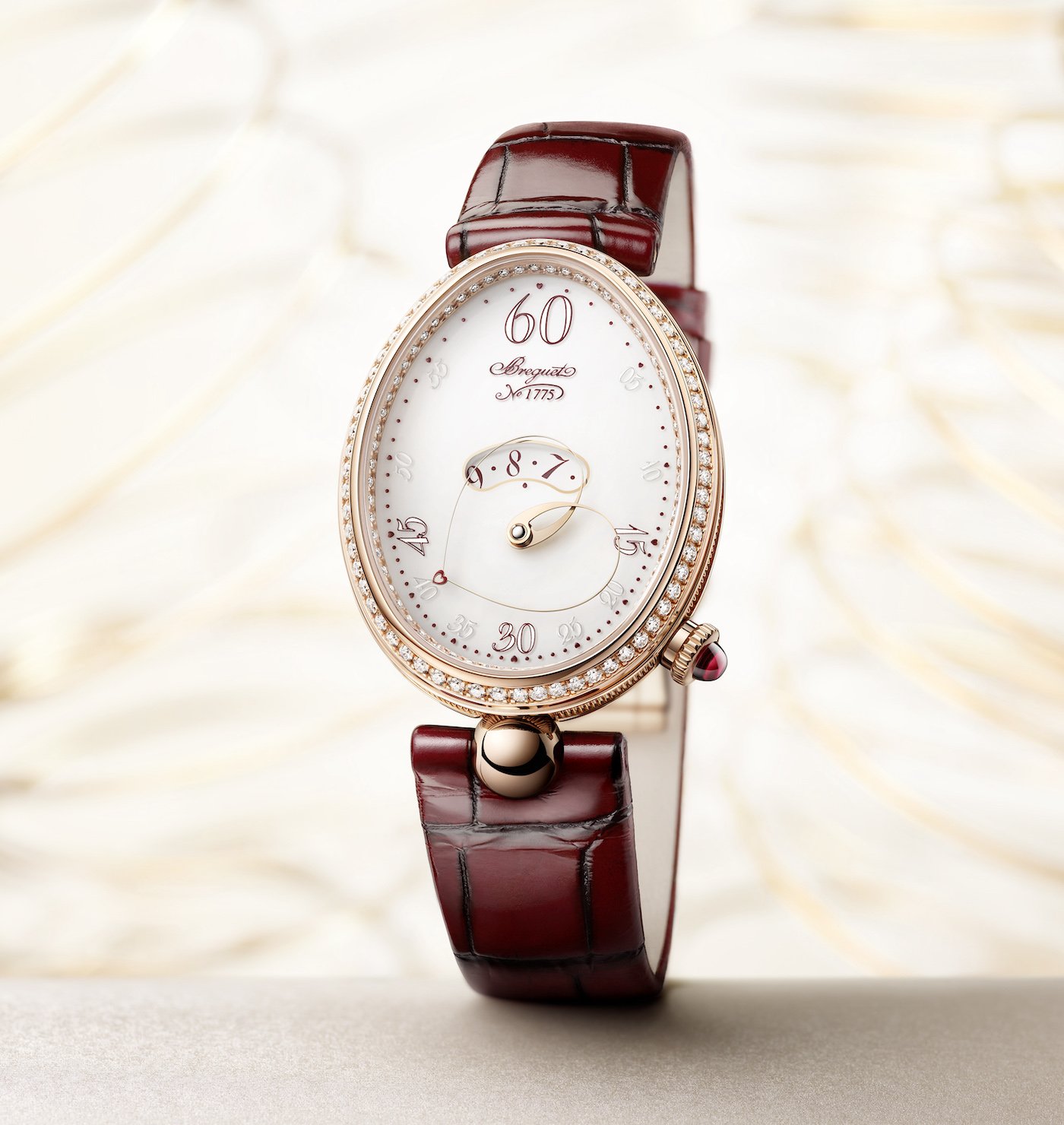

Silicon: the gateway to the future of mechanical watches?
atchmakers began taking an interest in silicon, a metalloid found in abundance in the earth’s crust, of which it constitutes 28 per cent, at the end of the 20th century. Known since antiquity but isolated for the first time only in 1823, it was transformed into monocrystalline silicon by the French chemist Henri Sainte-Claire Deville in 1854. The base material for the manufacture of transistors, printed circuits and microchips, it revolutionised the computer industry and gave its name to Silicon Valley.
The keen interest of the watchmaking industry in this material is explained by its exceptional properties. It is elastic but non-deforming, which means that on receiving a shock it moves and immediately returns to its initial shape. It is extremely hard (1,100 Vickers compared with 700 Vickers for steel), light (with a density of 2.33g/cm3 compared with 8g/cm3 for steel), highly corrosion-resistant and – invaluable in watchmaking – insensitive to magnetism. But it also has its defects. It is as brittle as its cousin, glass, and sensitive to variations in temperature.
But research overcame this double handicap around the same time as wafer technology was developing, wafers being the thin slivers of silicon from which the tiny, high-precision parts needed in watchmaking can be cut out.
“A whole new dimension in mechanical watchmaking”
The first use of silicon in watchmaking was the work of Ludwig Oechslin for Ulysse Nardin with his revolutionary Freak, presented in 2001, the first movement to include silicon components. But this pioneering achievement, made as a demonstration, remained an exception for some time. Silicon’s first, grand entrance into “traditional” watchmaking came thanks to Patek Philippe, who took the world by storm in 2005 with a world premiere: an escape wheel in monocrystalline silicon for a Swiss lever escapement.
The announcement created a sensation and the triumphantly worded press release of the time describes “an innovation the importance of which cannot yet be measured, but which opens up a whole new dimension in mechanical watchmaking”.
Requiring no lubrication, more perfectly shaped and more accurate than a steel escape wheel, this silicon escape wheel served to equip a special, limited series of 100 pieces of the Annual Calendar Ref. 5250, the first series from the Patek Philippe Advanced Research unit. It was officially offered to “a limited circle of collectors and watch-lovers with a passion for technological exclusivities so they can be the first to take advantage of an innovation that will mark a turning point in the watchmaking industry”.
At the time, many observers shrugged their shoulders at the announcement. But what followed indeed showed that Patek Philippe was not exaggerating and that silicon was destined to become de rigueur across the watchmaking sector.
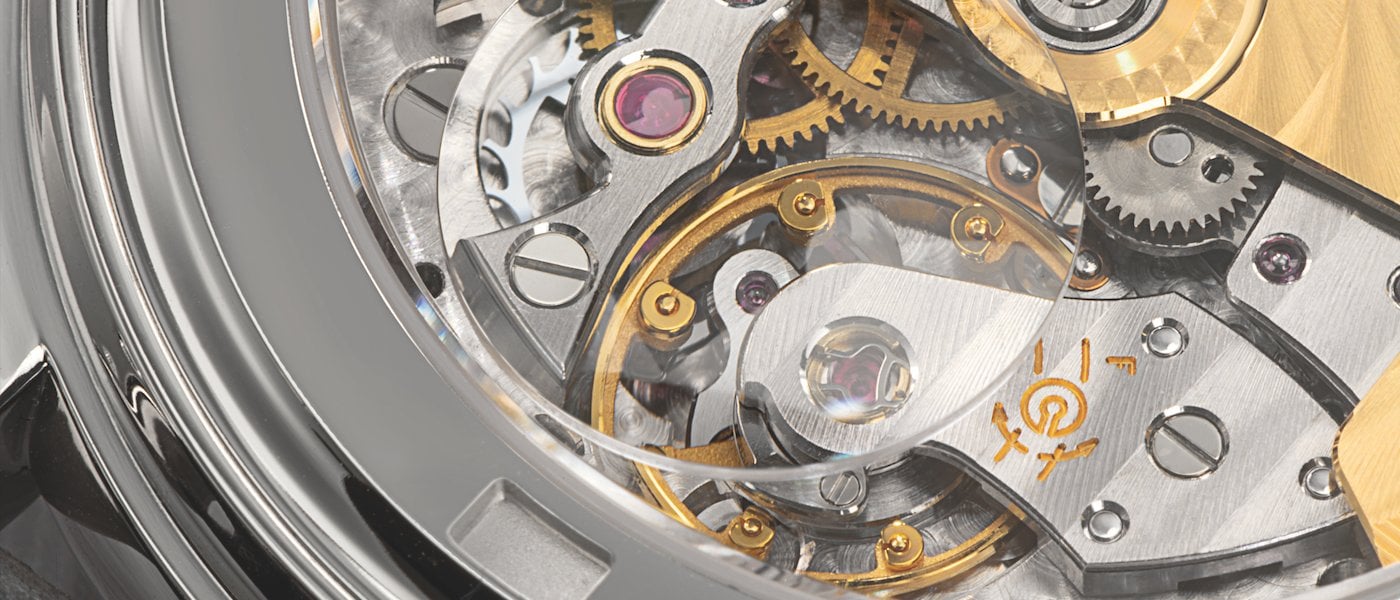
The consortium
Patek Philippe was not the only watchmaking entity to be working on silicon and its potential uses. Initially, the Geneva-based company had collaborated with the IMT, a microtechnology research centre at the University of Neuchâtel, in its research work. But to explore more deeply into the material’s watchmaking potential, a consortium made up of Patek Philippe, Rolex and the Swatch Group was created at the Swiss Centre for Electronics and Microtechnology (CSEM) in Neuchâtel.
The research undertaken by this consortium resulted in the industrial production of silicon balance springs. A strategic step forward.
The great fear at first was that despite all its qualities silicon would turn out to be too brittle and too sensitive to temperature variations to be used for balance springs. But the solution devised thanks to their joint research was oxidisation, which created a fine “bark”-like layer making it more rigid and protecting it from temperature variations. As a tribute to Charles Edouard Guillaume, winner of the Nobel Prize in 1920 for his invention of the famed Invar, which enabled the effects of temperature on a metallic balance spring to be minimised, this technology was named Silinvar®.
The great fear at first was that despite all its qualities silicon would turn out to be too brittle and too sensitive to temperature variations to be used for balance springs. The solution was oxidisation.
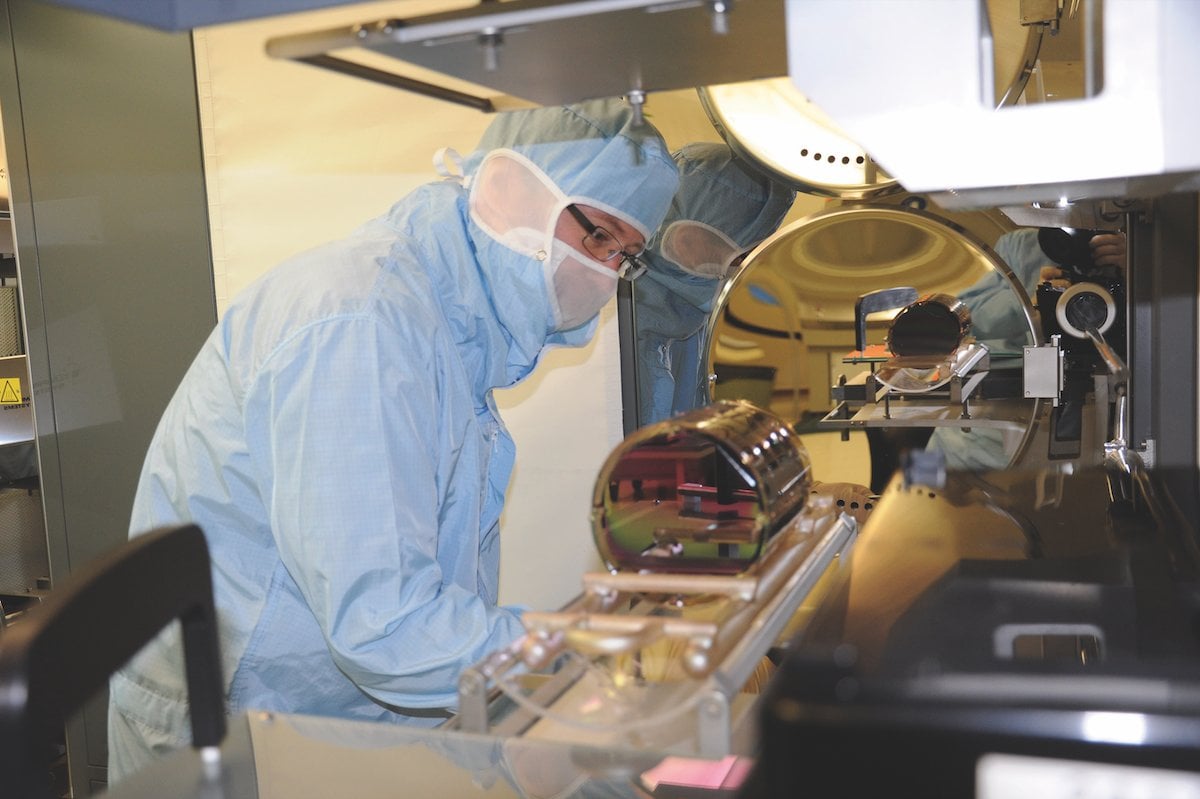
Gradual introduction
With this major technological advance as their starting point, the members of the consortium each developed their uses of silicon more or less rapidly. Capitalising on its momentum, Patek Philippe introduced its isochronous Spiromax® balance spring in 2006, its Pulsomax® escapement (escape wheel and lever) in 2008, complemented by the GyromaxSi® balance in gold and Silinvar® in 2011.
Together, these innovations, gradually released in limited editions by Patek Philippe Advanced Research, form a complete, high-tech regulating organ called Oscillomax®, which was inaugurated the same year in the extra-thin self-winding 240Q Si calibre (Q for Quantième Perpétuel, or Perpetual Calendar; Si for Silinvar®).
Here, silicon demonstrates the decisive advantages of its light weight, unusual geometry and excellent aerodynamics, which double the power reserve and allow the exceptional degree of accuracy of -3/+2 sec per 24h. Today, ten years later, silicon is present in 95 per cent of Patek Philippe watches. Consecration, one could say.
-

- The Patek Philippe 5650G Advanced Research Aquanaut Travel Time White Gold, produced in a limited series in 2016, combines multiple innovations. It features a high-tech silicon regulating organ alongside a second innovation: a reset mechanism in which the usual pivoting joints are replaced by “compliant” or flexible components. This mechanism, comprising just 12 openworked steel parts, featuring a number of springs with interleaved blades (compared with the 37 components of a traditional mechanism), transmits information from the two GMT pushers to the local time display.
Rolex waited until 2014 before introducing its balance spring, Syloxi, in the women’s calibre 2236 for the Oyster Perpetual Datejust Pearlmaster 34. Made in a composite of silicon and silicon oxide, it inaugurated a patented geometry that optimised its isochronism. After all, the brand with the crown logo could afford to wait: as regards the key topic of anti-magnetism, this innovation had its parallel in the Parachrom Bleu paramagnetic balance spring that the brand had launched back in 2000.
As for the Swatch Group, it went on to introduce silicon in 2009, first of all at Breguet, then at Omega, before gradually extending its use to nearly all its brands, including Tissot – with its Tissot Powermatic 80 – Certina and Hamilton. This industrial development was spearheaded by ETA and Nivarox – the latter, incidentally, being the company that supplies the great majority of Swiss watchmakers with traditional balance springs. The Swatch Group is successfully democratising silicon thanks to its industrial clout, while making a great leap forward at the same time.

Democratisation in progress
Initially, silicon balance springs were the preserve of the high-end brands because manufacturing them was costly: around CHF 100 a piece. Moreover, since the consortium members owned the patent, independently of one another they all did complementary research on manufacturing processes, geometries and different treatments, filing patents as they went, to be able to use this innovation in as many different ways as possible and at an industrial level. All this has had the effect of lowering the price of a silicon balance spring today to around CHF 20.
But the initial patent concerning the oxidation of silicon to make it insensitive to temperature variations is soon to enter the public domain – in November 2022 for Europe and in 2023 for Japan. Silicon technology, with its proven reliability, will therefore be available to all the players on the watchmaking stage.
The initial patent concerning the oxidation of silicon to make it insensitive to temperature variations is soon to enter the public domain – in November 2022 for Europe and in 2023 for Japan.
-

- A clean room where silicon components are produced (photo Patek Philippe)
Sigatec, a major player
And one major player in this technology, currently occupying centre stage, is Sigatec. This spin-off from Mimotec (bought by the Acrotec Group), founded in 2006 and owned equally by Mimotec and Ulysse Nardin, is a pioneering manufacturer of silicon micromechanical components. Now with a workforce of around forty, this ultra-high-tech company based in the canton of Valais, with its costly clean rooms, is active in the watchmaking industry but also in the biomedical sector, microfluidics and connector technology, churning out more than one million parts year.
For Marc-André Glassey, CEO since the company’s inception 15 years ago, the opening of the patent to the public domain represents a crucial development opportunity. “In 15 years, we’ve had time to acquire solid, detailed know-how that has enabled us to really build up this business,” Marc-André Glassey told Europa Star.
“The opening up of the patent to the public domain, which will free up the balance spring market, is certainly promising. What’s more, we’re expanding our premises by buying a factory next door to Mimotec, where we’ll be opening a new clean room, which means very substantial investment. But as always, there will be the early users and late adopters. While some brands are already making announcements, others are adopting a wait-and-see attitude. But they’ll all come, sooner or later.”
“As always, there will be the early users and late adopters. While some brands are already making announcements, others are adopting a wait-and-see attitude. But they’ll all come, sooner or later.”
Silicon, transforming the watchmaking industry
Marc-André Glassey also points to developments in demand that foreshadow transformations ahead in the Swiss watchmaking industry. “Manufacturers increasingly want ready-mounted oscillator subassemblies which, given the volumes required, is forcing us to automate assembly. Demand is clearly heading towards a finished, assembled product.” With the silicon oscillator, the actual assembly of the movement as a whole is considerably simpler. Instead of dozens of operations, a single operation suffices. A change that could transform watchmaking itself.
The democratisation of silicon is under way. Other patents will gradually enter the public domain – in 2023 that of the Patek Philippe outer terminal curve and its “bosses”, which reduce differences in rate, then in 2037 that of the inner curve.
Does this mean that this now highly effective technology is going to become ubiquitous in Swiss mechanical watchmaking? Marc-André Glassey reminds us that the number one after-sales service problem is related to damage from magnetism. “So anti-magnetism is a major issue, as demonstrated by Rolex, Tudor and Omega with their innovations. On that score, silicon is ideal. But in the future, the market is going to be divided solely between silicon balance springs and non-magnetic metal balance springs.”
The brands will be differentiated by which they opt for. We can already imagine a marketing battle over the key theme of resistance to magnetic fields – like the joint announcement by the Swatch Group and Audemars Piguet (in 2018) about the “revolutionary balance spring” carved out of a new, amagnetic compensating alloy called NivachronTM.
-

- Anchors on wafer
New escapements
But there is more to silicon than balance springs. This technology has also opened the door to a whole series of new approaches to watch regulation and escapements.
Without going into all these innovations in detail, let’s just mention the innovative escapements made possible by the use of silicon, such as the famous Zenith Defy Lab concocted by Guy Sémon and his teams, the Genequand Regulator presented by Vaucher Manufacture, which marries structures based on flexure bearings with silicon technology, the Constant Escapement from Girard-Perregaux, based on the instability of a buckled silicon blade, the numerous explorations and designs by Ulysse Nardin, or, even more recently, the monolithic silicon oscillator by Frederique Constant, beating at 40Hz.
Might these specific applications of silicon’s potential one day supplant the use of silicon in the strict conceptual framework of the traditional lever movement? While Marc-André Glassey professes “admiration for these systems”, to which he actively contributes with Sigatec, his view is that they will remain “specialities, niche products that are not going to replace the traditional, high-tech escapement ”.
There is more to silicon than balance springs. This technology has also opened the door to a whole series of new approaches to watch regulation and escapements.
“The fields of possibility are open”
Yes, but... innovation is a continuous process and whether silicon or some other material, “the fields of possibility are open”, says Philip Barat, who heads up R&D at Patek Philippe (a vertical, integrated applied research department employing 150, 50 of these alone involved in prototyping).
“Our research focuses in particular on flexibility. We have already explored and made metal flexure bearings. Lots of things are becoming possible today. Just take the example of the spring, which paradoxically weakens when put under tension! Other materials are also being explored, such as phosphorous, research is being done into thermal treatments, elasticity levels and so on. There’s much to be done in mechanics, new materials, powders, metallic glass. The future lies in new, ever finer, ever more efficient materials.”
Silicon has not yet said its last word by a long stretch. But now it is also having to compete with other materials that are emerging or under development. As for the escapement, there is every chance that silicon escape wheels will become the rule in the near future.
To set themselves apart, and backed by strong scientific, technical and economic arguments, the brands are going to put their money on high-performance alternatives. After decades of absolute supremacy of the traditional Swiss lever escapement with a metal balance spring, are we heading towards an atomisation of the modes of regulation in mechanical watches? Only the future will tell.
“There’s much to be done in mechanics, new materials, powders, metallic glass. The future lies in new, ever finer, ever more efficient materials.”
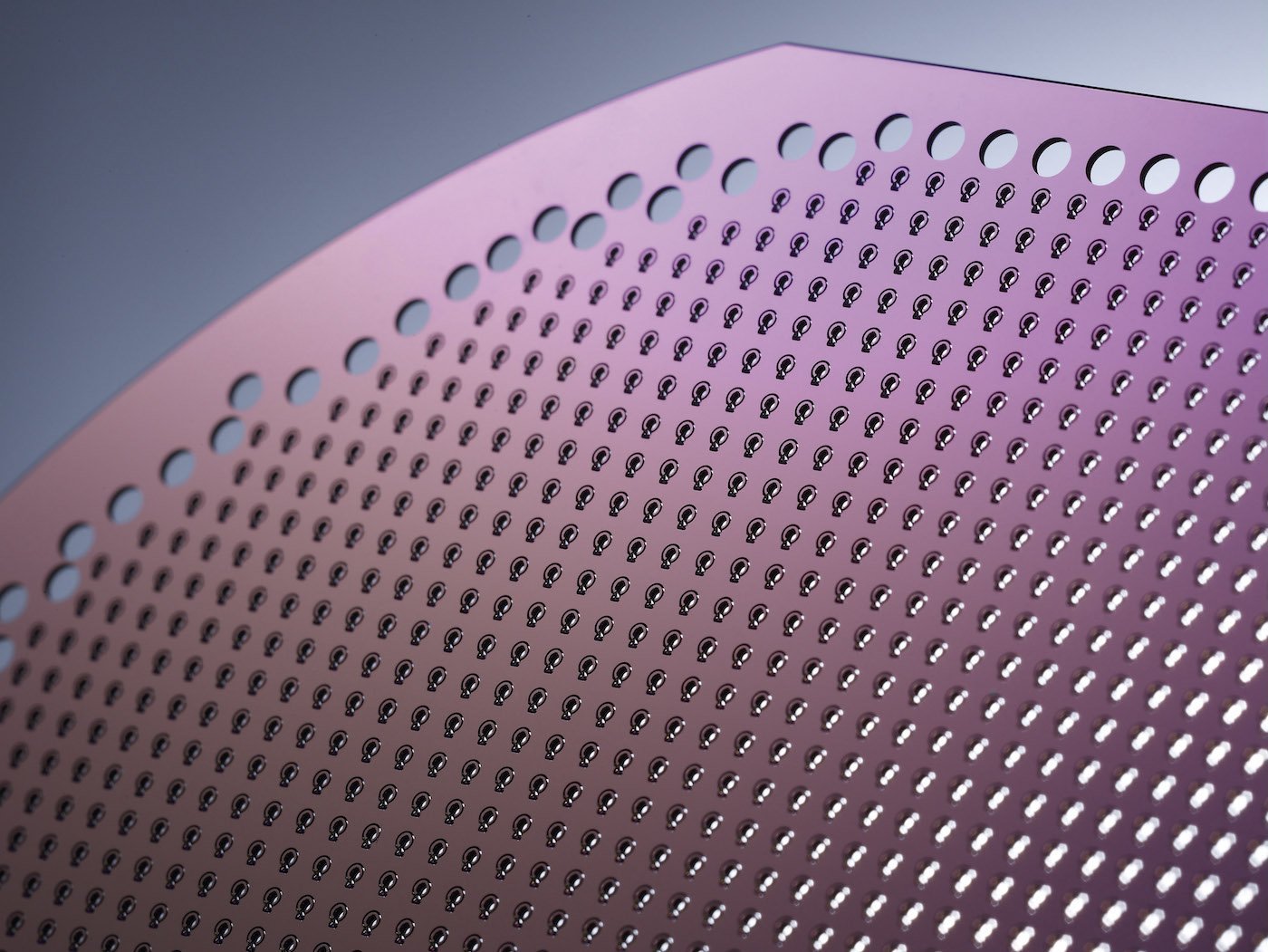
HORAGE IN THE STARTING BLOCKS
Andi Felsl, who heads up Horage (a small team that delivers a big punch, as the Biel-based brand styles itself), has already made the announcement: as soon as the patent for producing silicon balance springs insensitive to temperature fluctuations enters the public domain in autumn 2022, Horage will be ready to launch the Supersede model fitted with its own silicon balance spring.
Convinced that silicon is “the only way” forward, Andi Felsl sets out his roadmap. “We started by taking a close look at all the patents, all the options. Little by little, we learned and mastered the technology [editor’s note: with the help of the German institute Hahn-Schickard-Gesellschaft für angewandte Forschung e.V.]. But we couldn’t use it. Innovation was blocked for 20 years. Innovation is low when the market is high, as the saying goes. But today, we’re ready. Prices have sunk, but they were artificially high.”
The proprietary silicon regulator by Horage will be mounted on a movement developed and produced by the brand itself. For Andi Felsl, that represents “a huge economic advantage”.
“Silicon is more expensive,” he explains, “but ultimately you make major savings because the adjustment times for a traditional balance spring are lengthy and costly. And the ensuing tests, like the COSC for example, are expensive too. But to get to that stage, we had to learn to master the entire industrial process, especially assembly. The work flow was completely different. The industrialisation was the most difficult part, but now we control every stage. Horage’s goal is to offer high-performance products at affordable prices. Silicon will enable us to attain the performances we’re aiming for at acceptable prices we believe in [editor’s note: between CHF 2,300 and CHF 12,000].”
“Silicon provides better chronometry when produced at an industrial level,” he adds. “That’s where the future of Swiss watchmaking lies, in high-performance watchmaking. Because its volumes are not going to increase. They are going to flatten out at six million mechanical watches a year. But the product itself is going to improve more and more. Which will make it all the more attractive. We survived the quartz crisis. Silicon is our ally in the next stage of the adventure.”
“Silicon is more expensive, but ultimately you make major savings because the adjustment times for a traditional balance spring are lengthy and costly. And the ensuing tests, like the COSC for example, are expensive too.”

Behind the scenes: Omega’s R&D in the 21st century
hen legendary British watchmaker George Daniels developed his co-axial escapement, he probably never imagined that his reinvention of the watch’s regulating mechanism, which maintains the oscillations of the balance wheel, would be applied on the scale of a brand like Omega, although he did explain that his creation was “intended to sustain the public affection for the mechanical watch during the 21st century.” The Swiss giant made this innovation the starting point for a complete reinvention of its portfolio of calibres over the last twenty years.
At the turn of the millennium, in 1999, Omega introduced its first Co-Axial Calibre 2500, equipped with a free sprung balance, followed by the Co-Axial Calibre 8500 in 2007, the first “in-house” movement built specifically around this innovation. Instead of a traditional lever escapement, the two co-axial wheels and the three pallet levers reduced the friction of the regulating mechanism, ensuring greater chronometric stability – and longer service intervals.
The company’s roots lie in the development of reliable calibres: Omega takes its name from a movement developed in 1894 by the brand founded by Louis Brandt. A century later, the co-axial calibre, the cornerstone of Omega’s entire movement portfolio, was refined with the introduction of the silicon balance spring and embellished with the use of new alloys such as Sedna gold. This bold movement strategy will culminate next year in the Master Chronometer certification of virtually the entire catalogue of Omega mechanical calibres. The chief architect of these developments, Gregory Kissling, explains how this new chronometric quest has unfolded.
Europa Star: What is your approach to innovation?
Gregory Kissling: Innovation is good, but the real challenge for a brand like ours, which has a certain volume, is industrialisation. Without being able to master consistent quality, it’s impossible to industrialise an innovative approach, let alone control the costs of its implementation. In the case of Omega, we also have to remain consistent with our long history and style. So it’s a very fine balance, and we achieve it by going step by step, never by changing a whole collection at once. The Master Chronometer certification is a good example of this gradual approach to innovation: the first certified model was introduced in 2015, and next year this certification will cover almost all our models, with a few exceptions such as the Calibre 321, found in some Speedmasters.
“Innovation is good, but the real challenge for a brand like ours, which has a certain volume, is industrialisation.”
-

- Gregory Kissling is Omega’s Head of Product Management.
Let’s start with the movement: if you were to sum up movement innovation at Omega over the last two decades, the starting point would certainly be the co-axial escapement by George Daniels, introduced in 1999.
Initially we applied this innovative escapement to replace the Swiss lever escapement on ETA calibre bases. But we soon realised that we would have to develop our own co-axial movement. This gave a big boost to our own calibre unit, as well as imposing special chronometric demands, which led eventually to the Master Chronometer certification, with its maximum variance of 0/+5 seconds per day versus -4/+6 seconds per day for the COSC. Since then, we have developed our own movements, by and for Omega, and we have our own “in-house” movements, recognisable in particular by their “arabesque” Geneva waves.
-

- A view of the 201 components of Omega’s Co-Axial Calibre 8501, launched in 2007, a landmark in the Swiss giant’s movement development as the first in-house calibre designed around the co-axial escapement.
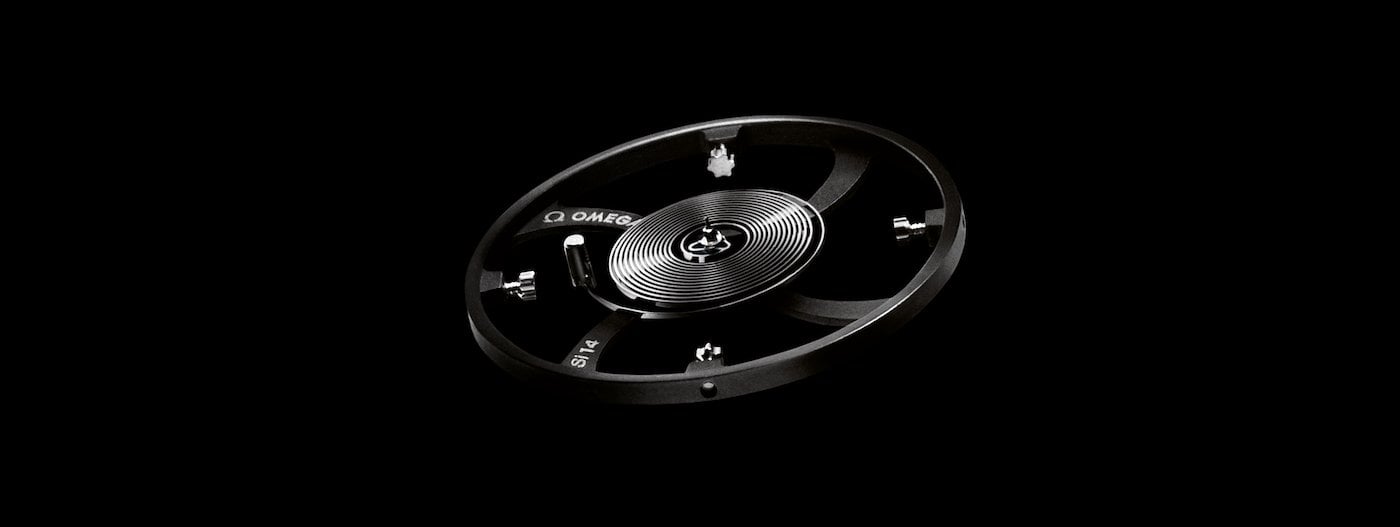
Another milestone was the introduction of the non-magnetic silicon balance spring in 2008.
The patent dates back to 2002, when it was registered as part of a CSEM consortium. Six years later we launched the first models equipped with a silicon balance spring, the Spiral Si 14 (after the element’s chemical symbol and atomic number), designed to resist magnetic fields and improve chronometric stability. These included the Co-Axial calibre 8520/8521 fitted to the Seamaster Aqua Terra Ladies collection, and the Co-Axial calibre 8601/8611 with annual calendar fitted to the De Ville Hour Vision Annual Calendar. The industrialisation of this innovation was carried out at Nivarox. The aim was not to introduce it in a single type of movement, but eventually to equip all our calibres with it. The silicon balance spring is the basis of all our antimagnetic calibres. It is also a group strategy, since other Swatch Group brands use silicon balance springs as well.
“The Master Chronometer certification is a good example of this gradual approach to innovation: the first certified model was introduced in 2015, and next year this certification will cover almost all our models.”
This technology reached a degree of maturity five years later, in 2013, with the Co-Axial calibre 8508, capable of withstanding more than 15,000 gauss.
Up to that point, we had tried to protect the calibre by means of an internal casing, acting like a Faraday cage against magnetic fields. But above 1,000 gauss, the magnetic fields were strong enough to reach the regulating organ. We therefore concentrated on creating a movement that was itself magnetic resistant. This new technology, first introduced in the Seamaster Aqua Terra line, allowed us to carry out important movement developments without being constrained by a specific casing, since the internal protective case became unnecessary. This opened up the face of the watch, with the possibility of date windows, as well as the back, with the possibility of a transparent case back. Technology caught up with aesthetics!
This also led, two years later, to a new Master Chronometer certification, delivered by METAS, a Swiss federal institute. You used to be the only holder of this certification, but other brands, such as Tudor in 2021, are starting to come on board.
By being pioneers, we have been able to go a long way in developing and strengthening the criteria. Today, some MRI machines emit magnetic fields exceeding 15,000 gauss. Between 2013 and 2015, we developed the anti-magnetic movement in several sizes, from the 9-line ladies’ calibre to the 13-line calibre with two barrels. These basic movements then allowed us to integrate several complications such as the day-date and GMT, and then to develop manual movements. And in terms of the chronograph, the Co-Axial 9300 movement, which took six years to develop, is a fundamental element of our brand, which is strongly focused on this type of complication.
Let’s move on to your movement materials: could you clarify the distinction between your “standard” and “luxury” calibres?
On the most luxurious movements, which equip models made from precious materials, from gold to platinum, you will notice the oscillating weight and the balance bridge are made of pink Sedna gold. This is a nod to the colours of our historic calibres, which were recognisable from afar because they were gilded using copper galvanic baths. The problem with rose gold is that it tends to discolour over time. So we introduced our own Sedna alloy in 2012 to stabilise its colouring. This innovation was also a new starting point for all our materials research. We combined our materials research with our movement research to design the Omega calibre of the 21st century.
“We combined our materials research with our movement research to design the Omega calibre of the 21st century.”
-

- Omega’s Sedna Gold
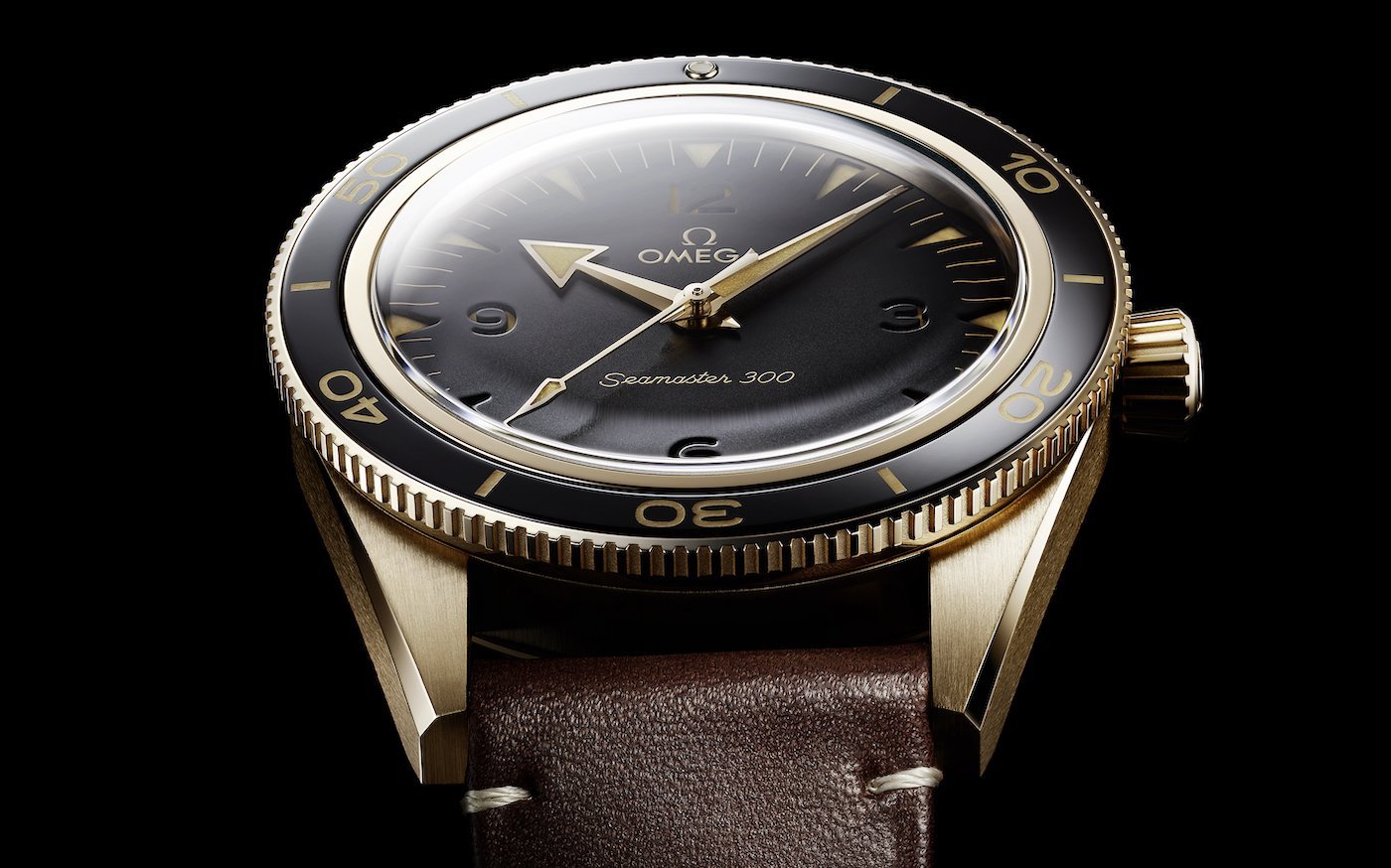
How did you refine your materials research?
We created cross-functional working groups to develop new alloys, such as Canopus Gold, Moonshine Gold and Bronze Gold. We also innovated a great deal in ceramics, which we combine with Liquidmetal or, in the case of Ceragold, gold. The aesthetic component is important. So is the ability to industrialise and control prices: we’d known how to work with 5N gold for generations, and suddenly we were looking to replace it... What I have noticed during all these years of R&D is that we are much more efficient if we have a vector, a direction that pulls us forward. The brand supplies the product to be found, but also the driver for the research.
-

- CeragoldTM developed by Omega allows ceramic timepieces to be decorated with 18-carat gold.
The man-machine equation is also about finding a subtle balance... especially for a brand like yours which seeks both value and volume.
That’s for sure. If you take the development of laser technology as an example, on the one hand, it has opened up new creative horizons for us, particularly in the animation of our dials. But this development has also created new human jobs. And the human touch is still very much present, even where we’re dealing with large volumes, whether in the development phase, assembly, finishing or inspection. Technologies can be as efficient as possible, but there will always be this subjective, fundamentally human aspect.
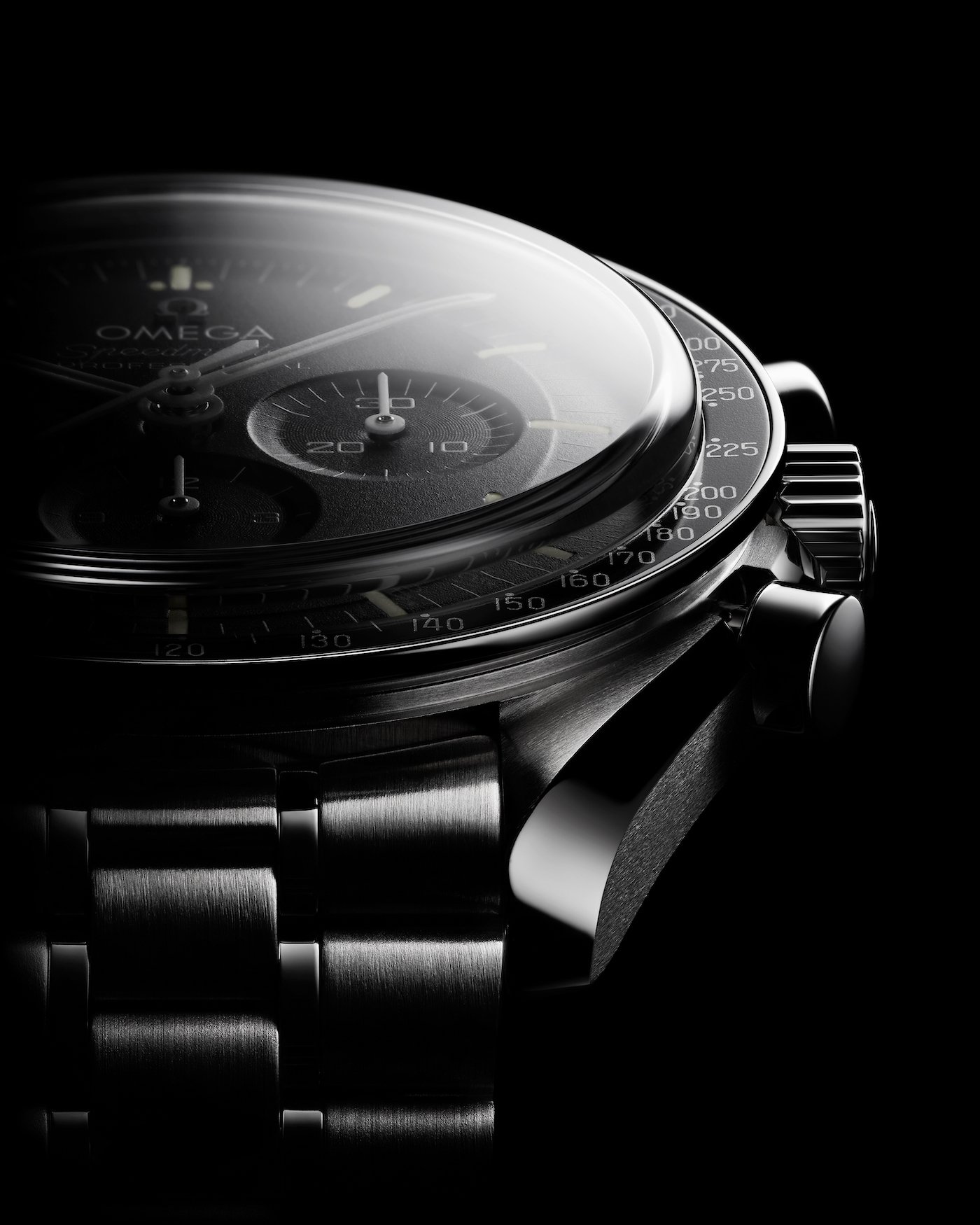

Why white platinum will topple rhodium in watches
he price of rhodium is soaring. Its cost has quadrupled over the past four years and in 2020 it became the world’s most expensive metal, selling for as much as CHF 800 per gram – CHF 800,000 per kilo.
And for many reasons it is unlikely to stop there. Mined mostly in South Africa and the Russian Urals, production is no more than 20 tonnes a year, and deposits are inexorably diminishing. At the same time, demand for rhodium is exploding, mainly because of new anti-pollution measures for cars – catalytic converters, for example. But it is a crucial component in other sectors too, for the nuclear industry, for lighting, mirrors, connectivity technology and more.
The watchmaking sector is also a big user of rhodium. The whitest precious metal after silver, it is highly resistant to corrosion and does not tarnish. Fine coatings of it have been used since time immemorial to reinforce certain crucial parts of the movement – such as the ébauches – to which it gives a highly appreciated white finish.
The price of rhodium is soaring. Its cost has quadrupled over the past four years and in 2020 it became the world’s most expensive metal, selling for as much as CHF 800 per gram – CHF 800,000 per kilo.
-

- White platinum coating for movement blanks is a high-quality, innovative alternative that is far more economical than the traditional rhodium, now the most expensive metal in the world.
Specialists STS
Created in 2006 in the Joux Valley by Frédéric Saulcy and Thierry Mesnier, STS, which is part of the Acrotec Group (see our article Acrotec - Vertical integration in the supply sector), has become one of the leading enterprises for surface treatments in the high-end watchmaking sector. It employs a workforce of 110 on four production sites in Switzerland’s Watch Valley and Geneva. Its reputation in watchmaking has enabled it to diversify into the automotive, aviation and connectivity sectors. But its core business remains watchmaking, for which it provides numerous solutions for electroplating, varnishing, tribofinishing, heat treatments and decoration.
STS has collaborated with the University of Franche-Comté and EPFL in Lausanne on several projects, and is also one of the few companies in its field to have a large R&D department. Which undoubtedly explains the company’s far-sightedness regarding the inexorable rise in the price of rhodium.
A less spectacular innovation than certain mechanical follies that occupy the spotlight, but undoubtedly more fundamentally useful to watchmaking and the watchmaking industry as a whole.
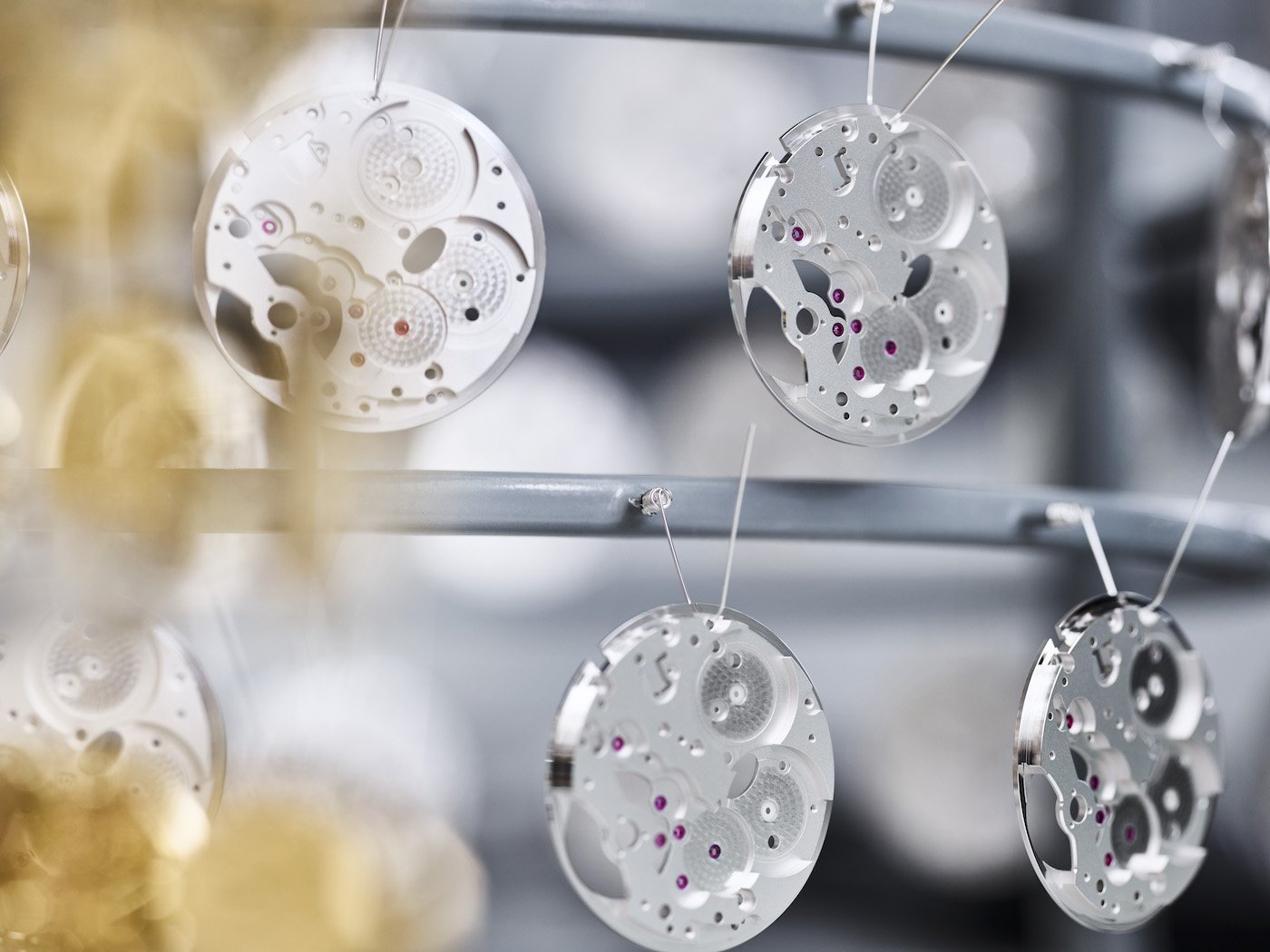
In search of an alternative
Historically, ébauches have been rhodium-plated for a very long time: its use dates back to the “peasant watchmakers”. But why? wondered the R&D managers at STS. “There seems to be no real technical necessity,” they explain. “But rhodium plating – also widely used in jewellery-making, especially for white gold – protects parts and provides a superb white finish. And rhodium bath plating is undoubtedly one of the easiest electroplating techniques.”
But now that rhodium has become the most expensive metal in the world, a genuine alternative had to be found.
More than a year of laboratory tests resulted in an innovative solution both technically and chemically: white platinum. Platinum and rhodium have got on well together, so to speak, for millions of years. Rhodium is physically related to platinum and always occurs with it in its natural state. It is also chemically combined with platinum in numerous applications. Back in 1896, the marriage of platinum and rhodium-plated platinum proved its worth in instruments designed to measure high temperatures. And that is just one example of the complicity between the two metals.
Rhodium is physically related to platinum and always occurs with it in its natural state. It is also chemically combined with platinum in numerous applications.
White platinum
Unlike rhodium, which is something of an endangered species, platinum resources are sure to last longer, as large reserves of it exist. Its unbeatable price – just over CHF 10 per gram compared to CHF 713 for rhodium (as of end October 2021) – make it a far more stable proposition in the medium term.
But that’s not all.
The result of a new, patented process, White Platinum by STS is composed of several metals, all from platinum mines. Developed by the R&D department, White Platinum provides a coating that is “just as white and shiny” as a rhodium coating, as well as being of similar thickness, up from 0.005-0.2μ to 0.1-0.2μ. Its hardness is 650HV compared to rhodium’s 850HV.
This new White Platinum coating can be reliably mass-produced and meets all watchmaking test requirements. It is compliant with REACH (the European regulation on the safety in the manufacturing and use of chemical substances in the European Union, which came into force in 2007) and resistant to Tropical Climate Testing (NIHS 96-50 climate and corrosion standard). In short, it seems to have everything going for it. Including its whiteness and shine.
Perfect timing
Some innovations arrive with a clap of thunder and a lightning flash. Others may arrive more modestly but be of genuine importance.
In a way, rhodium plating is part of watchmaking DNA. An ébauche without rhodium plating is but a shadow of itself. And so the fact that it is becoming unaffordable could, especially in these difficult times, damage the Swiss watch industry as a whole and its all-important volumes.
The exhibitors at the last EPHJ trade show in Geneva didn’t need to think twice. They awarded the 2021 EPJH Exhibitors’ Grand Prize to STS for their new White Platinum coating, which is comparable to rhodium plating on every score – aesthetically and technically – but at an unbeatable price.
It may be a less spectacular innovation than certain mechanical follies that tend to occupy the spotlight, but undoubtedly more fundamentally useful to watchmaking and the watchmaking industry as a whole.
Developed by the R&D department, White Platinum provides a coating that is “just as white and shiny” as a rhodium coating, as well as being of similar thickness.

The (near-)perfect tourbillon is within reach
n 1996, Europa Star published a critical assessment of the tourbillon by Jean-Claude Nicolet, a professor at La Chaux-de-Fonds School of Watchmaking. His analysis came to the scathing conclusion that “in creating the tourbillon, Breguet thought he was eliminating the effects of gravity. It was an error on his part. He succeeded only in masking them a little”. Nicolet then compared the ingenious watchmaker to a “conjuror who causes an elephant to vanish”.
This was tantamount to blasphemy, and the reaction of watchmakers to this critical assessment was equally scathing. No one disputed the scientific argument; the principal accusation was that we were out to “kill the golden goose” that the tourbillon was in the process of becoming. At the time, in 1996, it was estimated that around one thousand tourbillons had been manufactured over the course of two centuries, such was their rarity. Since then, and despite the reservations expressed as to the true chronometric benefits of a tourbillon in a wristwatch, tourbillon fever has taken over. Today, as many tourbillons are probably produced in one year as in the previous two centuries.
Since then, however, watchmakers have become increasingly conscious of the limitations of the tourbillon, especially in wristwatches, and have been exercising their ingenuity to overcome them. The result has been new configurations, double tourbillons, gyrotourbillons, triple-axis tourbillons, tourbillons inclined at 30° (which, let it be said, achieved the best results in the history of the International Chronometry Competition) to name just a few examples.
But no one has yet succeeded in designing the perfect tourbillon for a wristwatch, because to even out all the deviations in rate, its axis would have to sweep all directions uniformly. And that’s a headache, because all the mechanisms available to date have one intrinsic, mathematical defect. We will come back to this.
No one has yet succeeded in designing the perfect tourbillon for a wristwatch, because to even out all the deviations in rate, its axis would have to sweep all directions uniformly. And that’s a headache.
-

- The team at Instant-Lab EPFL researching a mathematical design for the tourbillon
Teamwork
Noémie Mandon is a young Frenchwoman who recently graduated from the Cluny Arts and Crafts Institute of Technology (which teaches mainly mechanical, industrial and power engineering). For her final year of studies, an academic exchange gave her the opportunity to study mechanical engineering at the EPFL in Lausanne, Switzerland. She was drawn to micromechanics, and more particularly to mechanical watchmaking, for its beauty and sophistication. She was also driven by an interest in research and innovation.
She arrived to Instant-Lab EPFL directed by Professor Simon Henein in Neuchâtel, to work with Ilan Vardi (see our article Breaking the Second Barrier). At their first meeting, Ilan Vardi revived a subject that had been lying dormant for quite some time: the geometry of the tourbillon. It became the subject of her Master’s research project.
The goal of her research was to construct a theoretical object using mathematical design, the purpose being to correct the intrinsic defect of tourbillons in order to offset “almost totally” the effect of gravity: to average it out, as in Breguet’s pocket watches, but for all directions. But to do this also meant coming up with a means of varying the tourbillon’s speed of rotation, which in the tourbillons available today is constant for each axis. In mathematical design, a theorem is implemented mechanically.
Ilan Vardi, the head of the project, brought together a talented team to assist Noémie Mandon (he emphasises the collective, team aspect of the work). It included Roland Bitterli, a scientist at Instant-Lab, in charge of “making sure the object did not become intractably complex”, Patrick Flückiger, a PhD student who in 2019 won the Omega Student Award with a Master’s project on a new type of Foucault’s pendulum, and Quentin Gubler, an engineer and watchmaker from Ulysse Nardin, where he worked on several projects related to compliant mechanisms.
Does the tourbillon really serve no purpose?
Invented in 1795 to offset the effects of the earth’s gravity on a pocket watch – that is, a a watch positioned vertically in a jacket pocket – the purpose of the tourbillon is to average out the vertical positions, thereby improving the watch’s accuracy. In this sense, it achieves its purpose. “Proof of this,” Ilan Vardi adds, “is that tourbillons automatically pass the COSC tests in all four vertical positions."
But things start to get more complicated in wristwatches. On the wrist, the tourbillon’s position relative to gravity is changing continually in all directions. “Useful only when the balance axis is perpendicular to the direction of gravity”, the tourbillon no longer serves its original purpose in a wristwatch. Because, while it can average out positions on a single plane (vertical), it cannot do so in three-dimensional space.
To solve this problem, watchmakers gradually turned to multiaxis tourbillons, starting with Anthony Randall, who invented the first double-axis tourbillon in the late 1970s. Numerous other propositions followed, including the Double Tourbillon 30° by Greubel Forsey, which enables the tourbillon’s axis to sweep a circle at a constant latitude, then the Gyrotourbillon invented by Eric Coudray for Jaeger-LeCoultre, after which came the triple-axis tourbillon, versions of which have proliferated.
Watchmakers have become increasingly conscious of the limitations of the tourbillon, especially in wristwatches, and have been exercising their ingenuity to overcome them, via double tourbillons, gyrotourbillons, triple-axis tourbillons, tourbillons inclined at 30°...
In search of uniform distribution of points in a sphere
But, as Noémie Mandon explains, we know that “to average out the effects of the orientation of the balance in relation to gravity in a wristwatch, the distribution of the points on the sphere swept by the axis of the balance has to be as uniform as possible”.
The uniform distribution of points on a sphere is an important mathematical problem, and has been the subject of numerous scientific papers. While we know how to distribute points uniformly on a rectangle, “for spheres there is no theoretical solution”. As will be explained below, the simplest method for distributing points on a sphere leads to an overconcentration at the poles. To understand the consequences of this phenomenon for multi-axis tourbillons, a friend of Anthony Randalll, the English engineer Guthrie Easten, highlighted this lack of uniformity in 1985. He found a cogent image to illustrate it.
The simplest method for distributing points on a sphere leads to an overconcentration at the poles. This lack of uniformity in the distribution of the points implies “a failure to compensate for the effect of the tourbillon’s position in relation to gravity”.
Imagine a tourbillon set at the centre of a Chinese paper lantern. Its axis is fitted with an ink gun which, at each oscillation of the escapement, shoots a drop of ink inside the lantern. If the effect of the multi-axis tourbillon were perfect, the drops of ink would be spaced out evenly across the sphere’s surface. But at the poles we unfortunately find an abnormal concentration of drops.
Why? Because the rotations of a multi-axis tourbillon are constant in latitude and longitude, they do not cover the same longitudinal distance, depending on the latitude at which they are located. When it arrives at the pole, the distance travelled is cancelled out. This lack of uniformity in the distribution of the points implies “a failure to compensate for the effect of the tourbillon’s position in relation to gravity”.
Variations in speed?
So, what can be done to remedy this? As Anthony Randall explains, in order to cancel out rate differences completely or maintain a constant rate in every possible position, “it is crucial that the double-axis tourbillon should vary in speed,” specifically when approaching the poles, where concentration increases.
Watchmakers know how to vary speed, for example in a chronograph. What solutions exist for varying speed according to the position of the tourbillon? Is it better to do massive amounts of calculations, or to apply a theorem and create a theoretical object?
The team opted for the second method: mathematical design.
Watchmakers know how to vary speed, for example in a chronograph. What solutions exist for varying speed according to the position of the tourbillon?
Mathematical design
The avenues proposed by Guthrie Easten to solve the problem of variable speeds consisted of using non-circular gears or cams to vary the speed of the balance axis. But quite apart from the fact that this approach requires a vast amount of skilful calculation, designing a non-circular gear is a particularly complex undertaking.
So Instant-Lab chose another approach. “Mathematical design” may sound very modern, but in fact,the designers of the Antikythera mechanism (an astronomical calculator driven by a crank) were performing mathematical design in the first century BC, although they did not use the term. They “simply” produced mechanical implementations of the mathematical models of the sun and moon proposed by Hipparchus (c. 190–c. 120 BC).
But the primary inspiration of the scientists at Instant-Lab was the work of another great mathematician of antiquity, Archimedes. In one of his best-known theorems, Archimedes established the correspondence between a sphere and its circumscribing cylinder. He found that “the area of any surface of the cylinder is equal to the area of its projection on the sphere”. One well-known example illustrates this perfectly.
The world map drawn using a projection of the earth in uniform latitudes (a) corresponds to the current multi-axis tourbillons. As we can see, the territories close to the poles appear far bigger than they are in reality – the equivalent of the denser projection of points in our Chinese lantern. The lateral projection of the earth onto a cylinder (b) preserves the surface areas of the territories and continents.
Following Archimedes’ lead we can therefore state that, unlike the map showing the projection of a sphere onto a cylinder, one way of uniformly distributing the points on a sphere is to distribute them uniformly on a rectangle which is rolled up into a cylinder – and then project them onto the sphere. As we can see, using this method the projection of the points at the poles remains uniform.
But let us return to the rectangular map of the world corresponding to a uniform latitudinal projection, but with deformation at the poles. The speed of the axis of rotation of the multi-axis tourbillon is constant latitudinally, causing an “accumulation” of positions at the poles. But this lateral projection preserves the longitude. In that case, it suffices to modify the speed of the axis of rotation of the balance wheel latitudinally on the sphere, i.e. make it more rapid when sweep- ing the upper part of the projection rectangle. “Which simply comes down to projecting a vertical line onto a circle”, the researchers explain.
One way of uniformly distributing the points on a sphere is to distribute them uniformly on a rectangle which is rolled up into a cylinder – and then project them onto the sphere.
From theorem to mechanical model
The mathematical design, then, consists of making a mechanical model of this projection, placed on a table turning at a constant speed longitudinally.
The critical point of this mechanism is the projection of a vertical line at constant speed onto a circle. This lateral projection of a vertical line onto the circle allows a faster speed to be obtained at the poles (where it theoretically attains infinite speed), which entails a lesser concentration of uniformly distributed points at those locations, theorem states.
To achieve this, it is necessary to mechanise an alternating rectilinear movement (i.e. alternately rising and falling) at constant speed. The constant speed is generated by a gear, which is also rotating at constant speed.
Just such an alternating rectilinear mechanism is described under #114 in Henry Brown’s 1868 book entitled 507 Mechanical Movements. The researchers were inspired by a number of historical examples. One of them was the Antikythera, and more particularly the mechanical expression of the non-uniform movement of the moon or sun. Without going into all the details, the model of Hipparchus’ work consists of taking an eccentric circle, representing a virtual sun, turning at a constant speed and projecting its positions onto an offset circle, centred on the earth. This gives rise to a non-constant speed on that geocentric circle. In concrete terms, the Antikythera achieves this projection thanks to a system consisting of a pin and slot, a device reproduced in the Instant-Lab mechanism.
The Antikythera achieves this projection thanks to a system consisting of a pin and slot, a device reproduced in the Instant-Lab mechanism.
-

- Exploded reconstruction of the Antikythera Mechanism, a 2,000-year-old device often referred to as the world’s oldest “computer”.
- ©Tony Freeth
Polar problems
But there was still one big problem, as the first models showed. The mechanism tended to stick at the poles (due to the progressive loss of alignment of the pin with its slot, against which it rubbed). Moreover, once at the pole, the mechanism’s wheel could just as well start turning in a clockwise or anti-clockwise direction, whereas it was crucial that it should always turn in the same direction.
This problem necessitated the addition of a supplementary mechanism that takes over at the passage through the poles (through the intermediary of an extra two-toothed gear). As a result of this, the distribution of the positions of the tourbillon would no longer be homogeneous, but this defect could be minimised by designs increasingly faithful to the theory.
A supplementary mechanism takes over at the passage through the poles (through the intermediary of an extra two-toothed gear).
Over to the watchmakers
During our visit to Instant-Lab, we were able to see for ourselves how these mechanisms work using a theoretical projection of a vertical line onto a circle. The researchers have succeeded simply and effectively in varying the speed of rotation according to the latitude. With a longitudinal axis of rotation, the distribution of the positions in three-dimensional space is uniform, with a much reduced discrepancy at the poles.
For the moment, this mechanism is mounted on a frame and driven manually by a crank. But the addition of the balance spring and escapement “will be relatively straightforward for master-watchmakers,” the team explains. Applying it to double and triple-axis tourbillons will enable the effects of gravity to be offset “almost totally” – a fundamental step towards achieving the “perfect” tourbillon that will at last be capable of fulfilling all its chronometric promises.
Now the ball is in the watchmakers’ court. Because, as Ilan Vardi says, “our business is concepts. We offer simple, elegant, clear conceptual solutions. Our prototypes are there to inspire of exploration, but we have no vocation to become watchmakers ourselves. We solve one problem, then move on.” So, a challenge to watchmakers: the perfect – or near-perfect – tourbillon is within reach. It is up to them to actually produce it.
The researchers have succeeded simply and effectively in varying the speed of rotation according to the latitude. For the moment, this mechanism is mounted on a frame and driven manually by a crank. But the addition of the balance spring and escapement “will be relatively straightforward for master-watchmakers,” the team explains.
One final remark: this work of mathematical design, applied here to watchmaking, also opens up numerous avenues of exploration in other domains where the effects of gravity must be counteracted, or which seek to make an object rotate in every possible plane and direction in a uniform manner. For example, what is the human eye if not simply a rotating sphere?
Just one demonstration that innovation in mechanical watchmaking can open up new vistas in numerous other fields.
A challenge to watchmakers: the perfect – or near-perfect – tourbillon is within reach. It is up to them to actually produce it.















